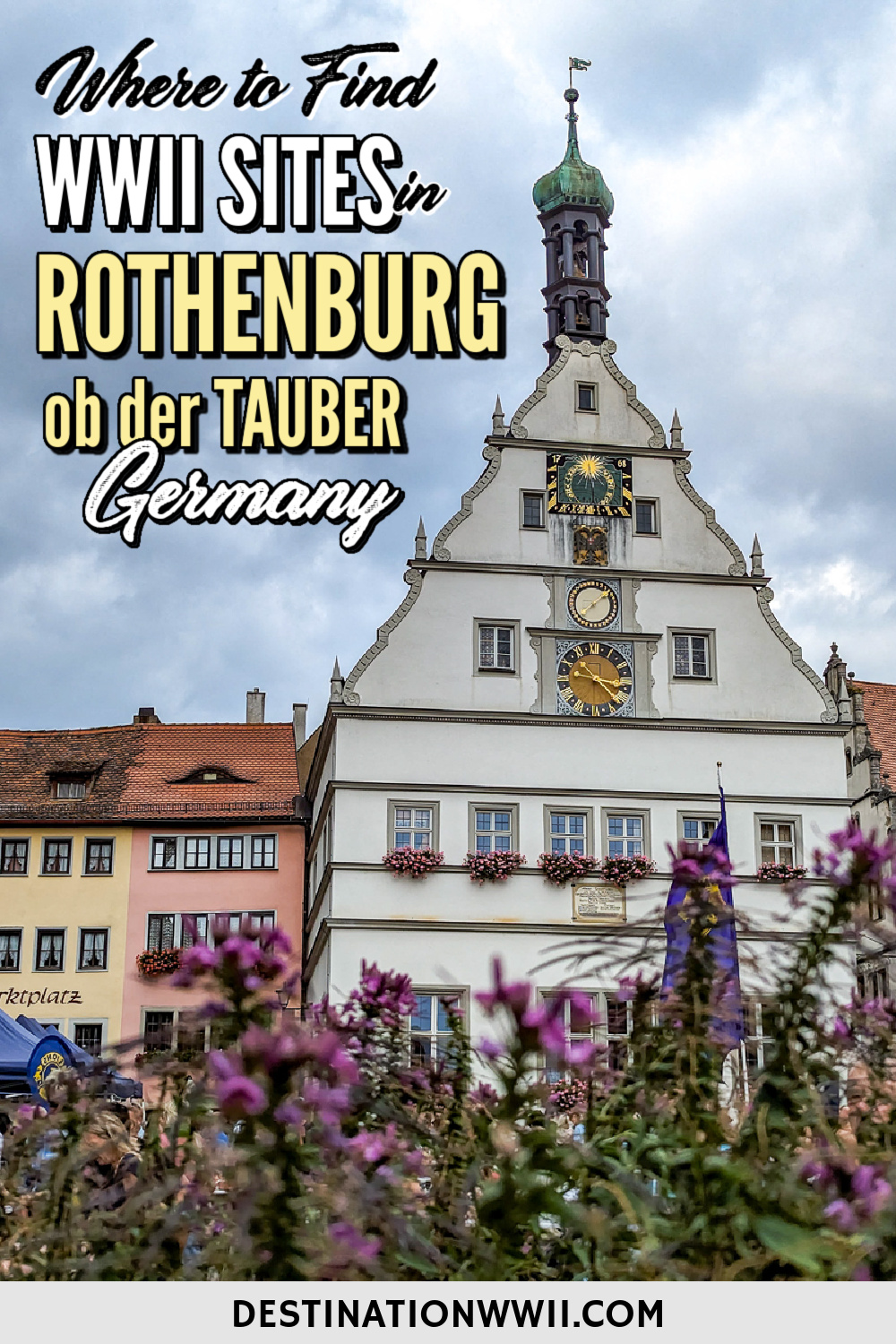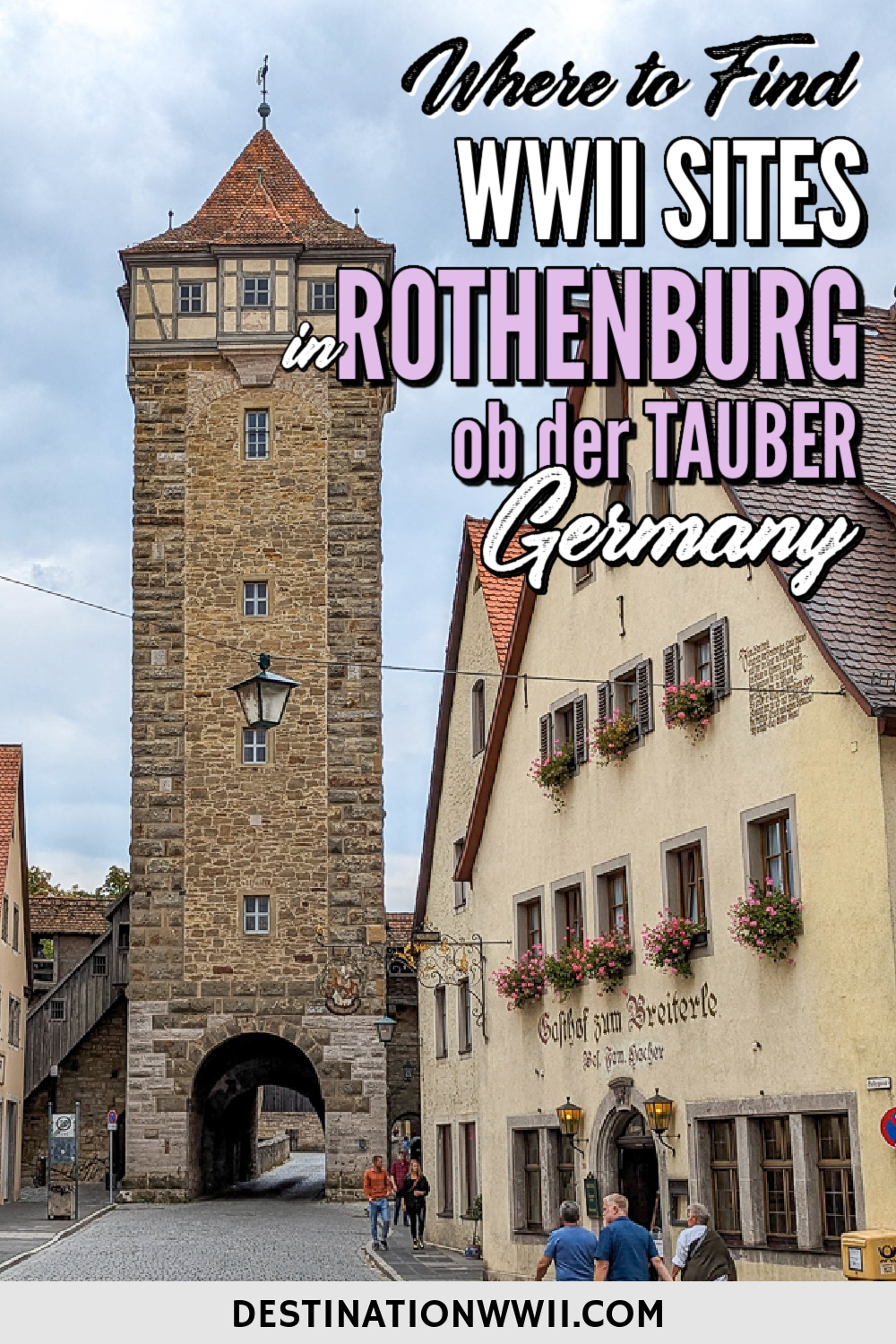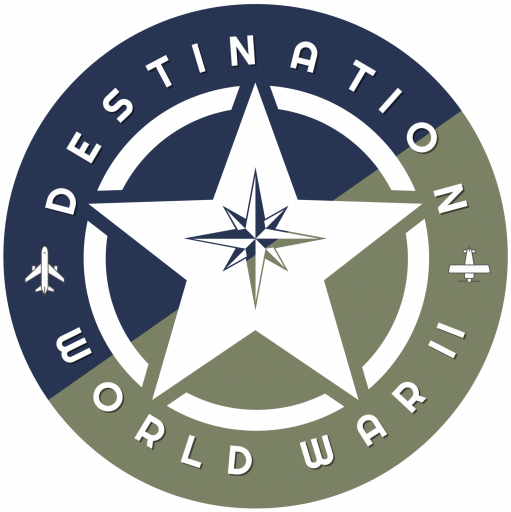Rothenburg ob der Tauber, Germany is one of my favorite cities in the world and I visit at least once every year. It’s a quaint and irrefutably beautiful medieval town on Germany’s Romantic Road that everyone should visit. For better or worse, Hitler and the Nazis felt the same way. As a result, there are a handful of interesting WWII sites in Rothenburg you can check out here (if you know where to look).
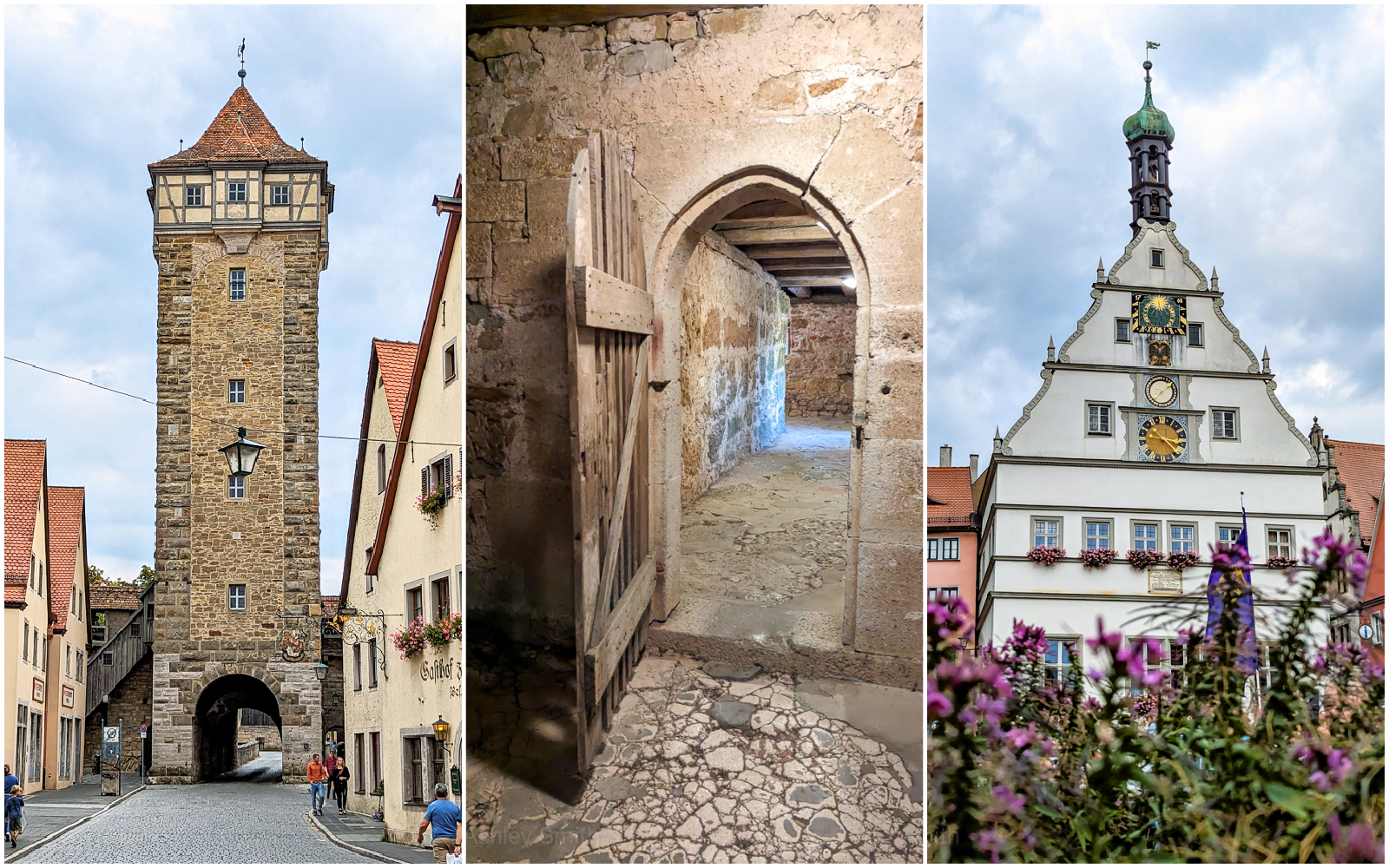
World War II in Rothenburg ob der Tauber
Many years before World War II in Europe even began, Rothenburg ob der Tauber played a major role in Nazi Germany. As a result, it survived most of the war completely unscathed. But in the spring of 1945, like much of the rest of Germany (notably cities like Dresden and Regensburg), it couldn’t avoid Allied bombing. Here are a few of the most notable events in Rothenburg’s WWII history:
The ideal German town
Rothenburg’s tourism boom dates back to around the middle of the 19th century when domestic and international tourists alike began arriving to see the town’s well-preserved medieval architecture. Shortly after the Nazi regime took over in 1933, it established its Kraft durch Freude program (“Strength Through Joy”). This program sought to provide “vacations” and other leisure activities to German citizens… all while forcing its Nazi ideals down peoples’ throats, of course.
One of the KdF’s most popular activities were trips from all around Germany to Rothenburg—the city the Nazis deemed the most quintessentially “German” town and ideal Nazi community. Rothenburg provided the perfect mix of national history, tradition, community, and culture. It was also considerably close to Nuremberg—the site of the Nazi Party’s enormous propaganda rallies.
For this reason, Rothenburg was both highly publicized and highly subsidized. It served as the crown jewel of German tourism and, as a result, received considerable financial assistance for its historical preservation, upkeep, and promotion.
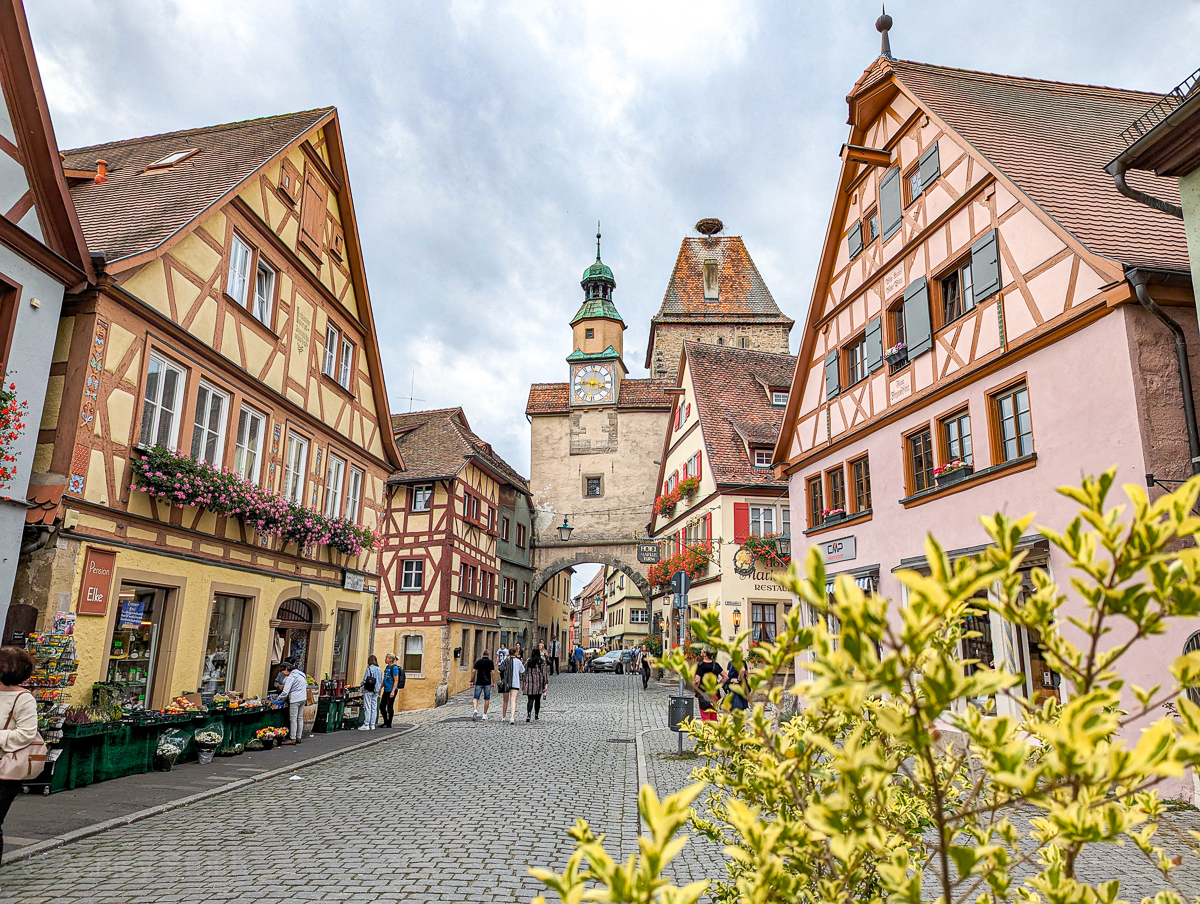
Anti-Semitism in Rothenburg
Unsurprisingly, the citizens of Rothenburg enthusiastically supported the Nazi Party and everything for which it stood. In 1932, when the Nazi Party earned just 37.2% of the national vote, it actually received 82% of the vote in Rothenburg County, the highest percentage in Nazi history. Rothenburg’s mayor, Friedrich Schmidt, was rabidly anti-Semitic.
Sadly, Rothenburg has a long history of anti-Semitism and persecution of Jews. During the so-called “Rintfleisch Massacre” of 1298, around 450 Jews were brutally murdered here—burned to death while seeking refuge inside the castle or otherwise slaughtered. In 1520, all of the city’s Jews were once again driven out of town. By the start of World War II, there were only 20 Jews left living in Rothenburg. Twenty.
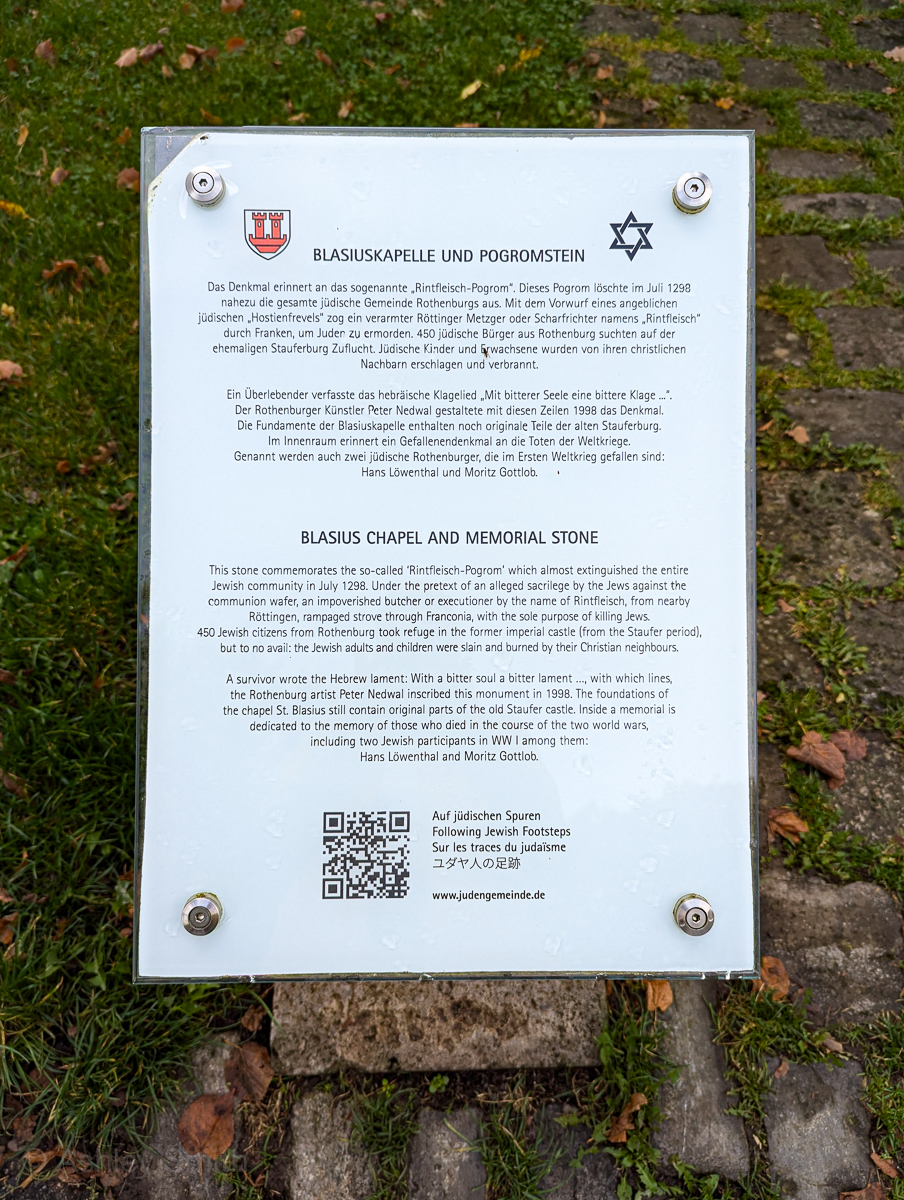
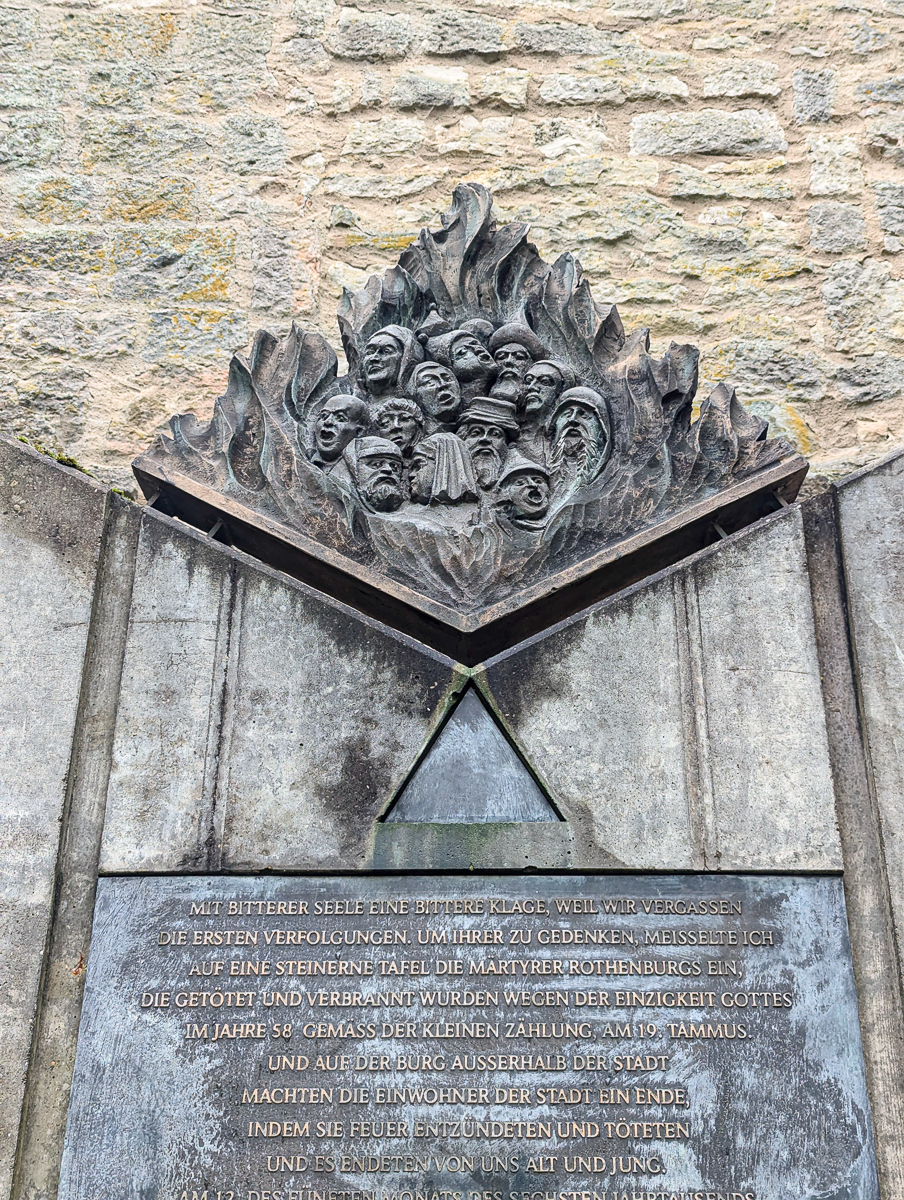
The Nazis’ emphasis on making Rothenburg the “ideal German community” centered largely around what it considered purity and cleanliness. While this began innocently enough with things like keeping trash off the streets and eliminating garish billboards, it quickly evolved into mandating “racial purity” as well. And I’m sure you know where I’m going with this.
On October 24, 1938, after a night of anti-Semitic violence and vandalism, Rothenburg declared itself “Jew-free.” Ecstatic about making Rothenburg Jew-free again, the town commemorated this victory with a series of speeches and celebrations. It had become the first German city to “solve the Jewish question.” (Understandably, no Jews returned to Rothenburg after the war and no Jew has lived here ever since.)
Just two weeks later, likely inspired by Rothenburg’s “success,” similar mass pogroms erupted all over Germany during what would become known as Kristallnacht.

Bombing of Rothenburg
Rothenburg survived most of the war unharmed. But on March 31, 1945, the US Army dropped incendiary bombs over Rothenburg, destroying around 40% of its historic center. Shortly after, US Army representatives met with the German commander and negotiated a ceasefire in order to spare the rest of this historically significant town. After the war, the town rebuilt almost all of the destroyed homes and structures in their original likenesses.
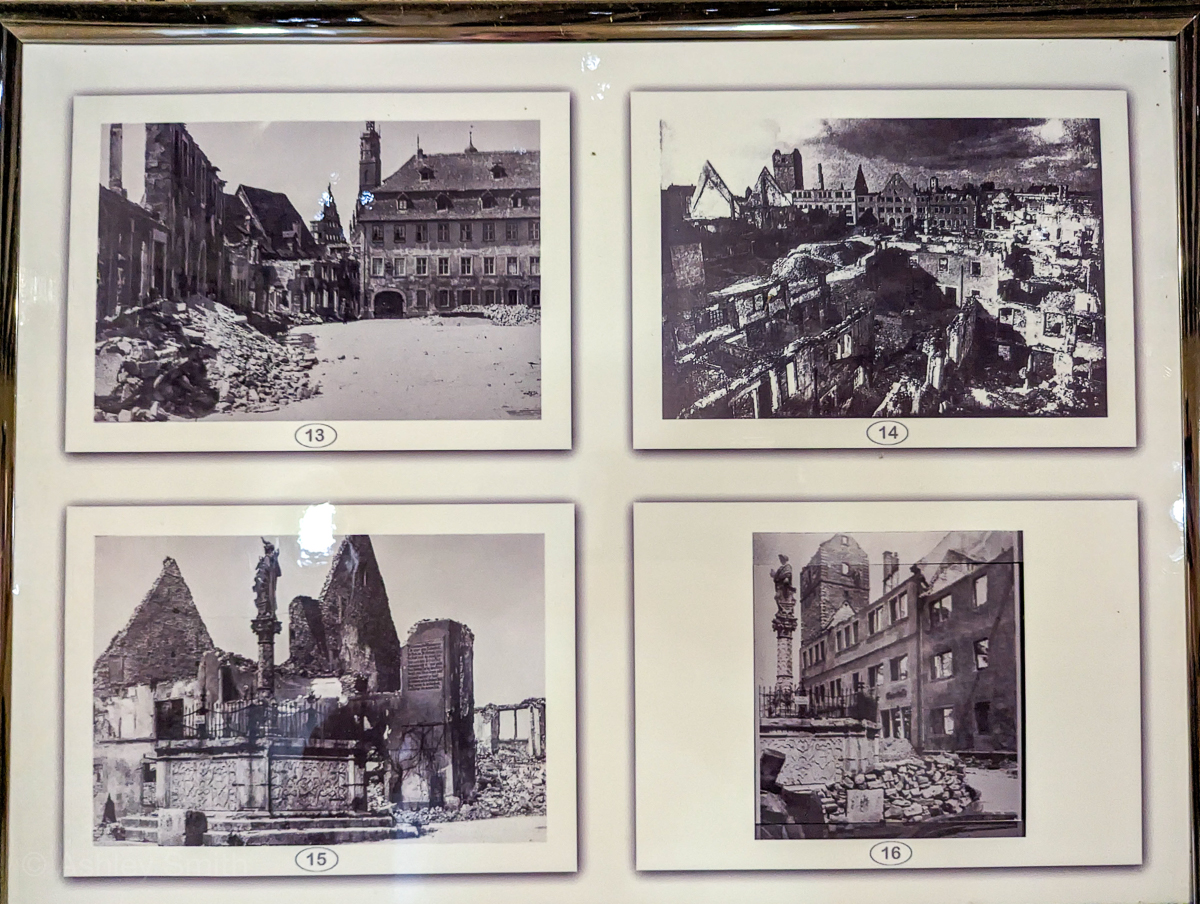
Map of WWII sites in Rothenburg ob der Tauber
This map contains all the Rothenburg ob der Tauber WWII sites I mention in this post. To save this map: Click on the star ⭑ next to the map’s title to save in your Google Maps. To use this map: When you get here, open Google Maps on your phone, click “Saved” at the bottom, then click “Maps.”
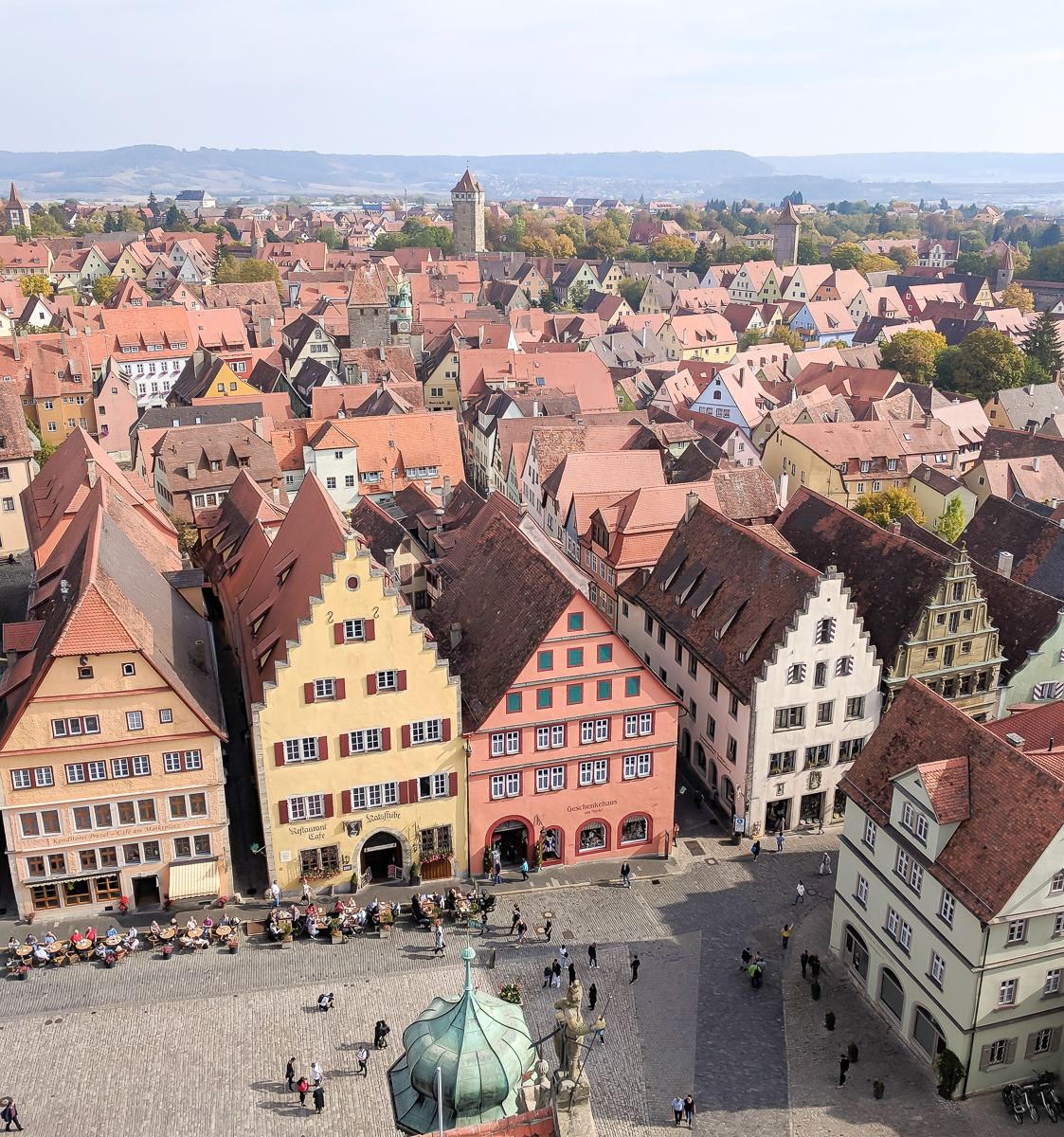
Also check out this list of WWII sites in Stuttgart.
WWII Memorials in Rothenburg ob der Tauber
I’ll start this list with the memorials you can find in Rothenburg dedicated to those persecuted and/or killed during WWII.
1. Rothenburg Stolpersteine
First up in terms of WWII sites in Rothenburg are the town’s Stolpersteine. “Stumbling Stones” are small brass cobblestones inlaid in the ground outside the last known residence of a Holocaust victim. They typically contain the person’s name, birth and death dates, as well as their fate and/or the camp at which they were killed. You can find these small memorials in most of the cities that were at one time occupied by Nazi Germany, including Rothenburg.
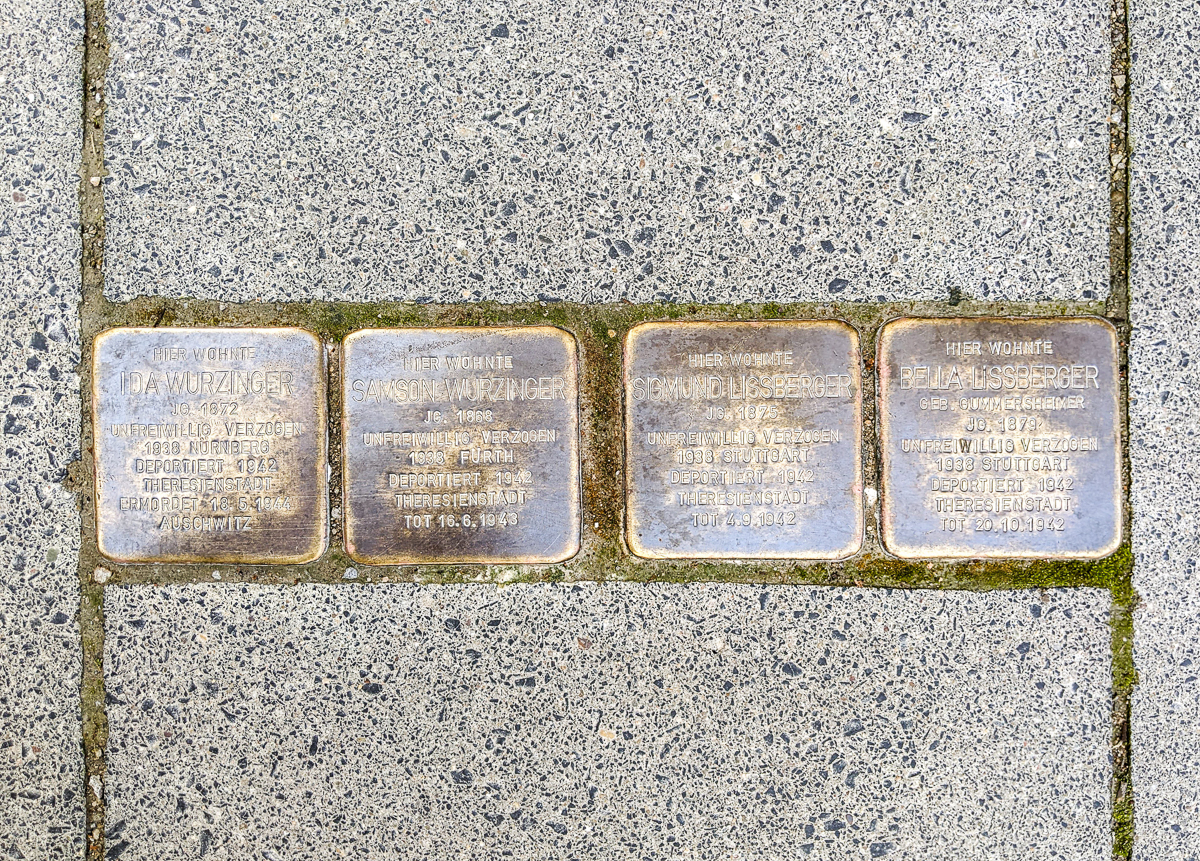
Rothenburg had just around 20 Jewish residents at the start of World War II and many of them have Stolpersteine in their honor. Keep your eyes towards the ground while you’re walking around Rothenburg’s historic center and you’re likely to come across one or two. But if you’d like to be sure to see some, here are some addresses where you can find them:
- Kirchgasse 1 – Jonas Gottlob
- Judengasse 22 – Rosa & Sigmund Hamburger
- Herrngasse 21 (The location of the former synagogue) – Sigmund & Bella Lissberger / Ida & Samson Wurzinger
See my full guide to Europe’s Stumbling Stones here.
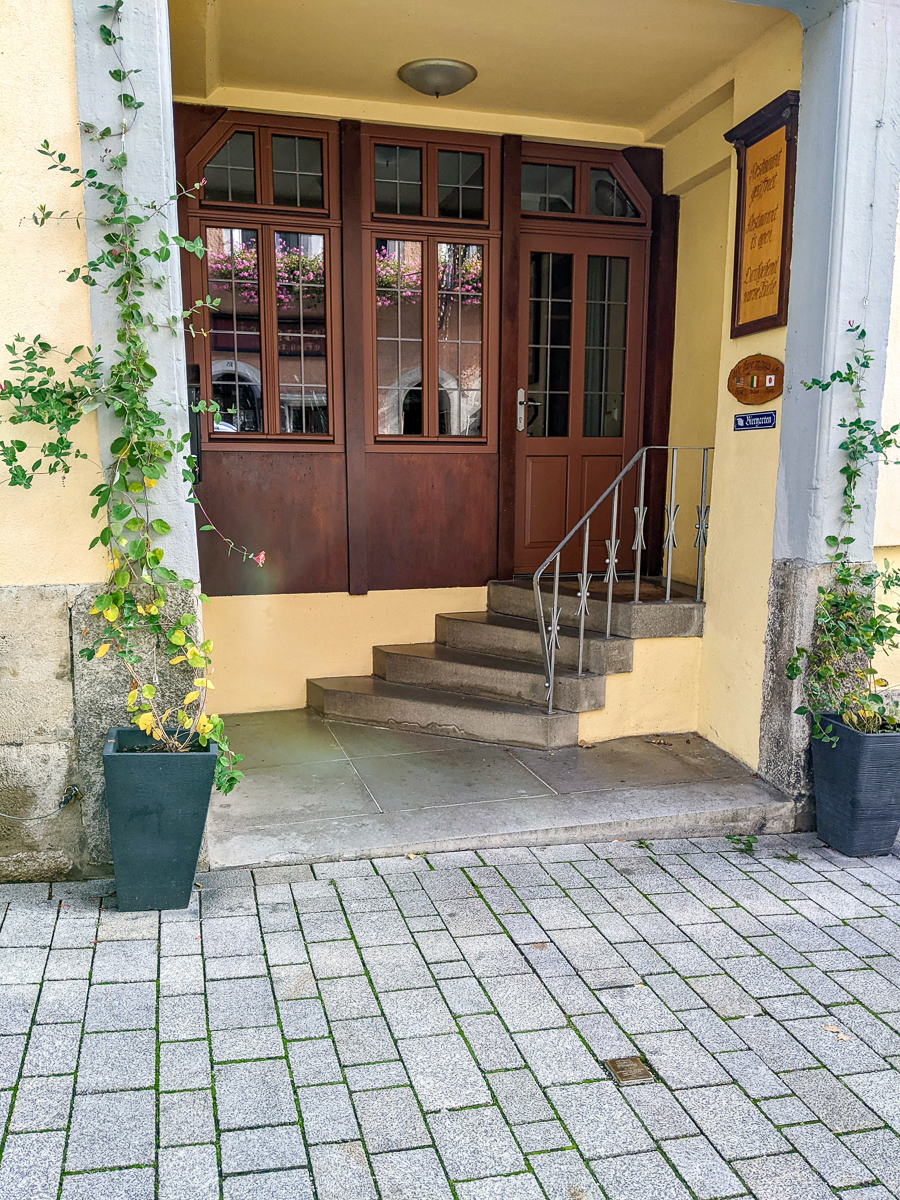
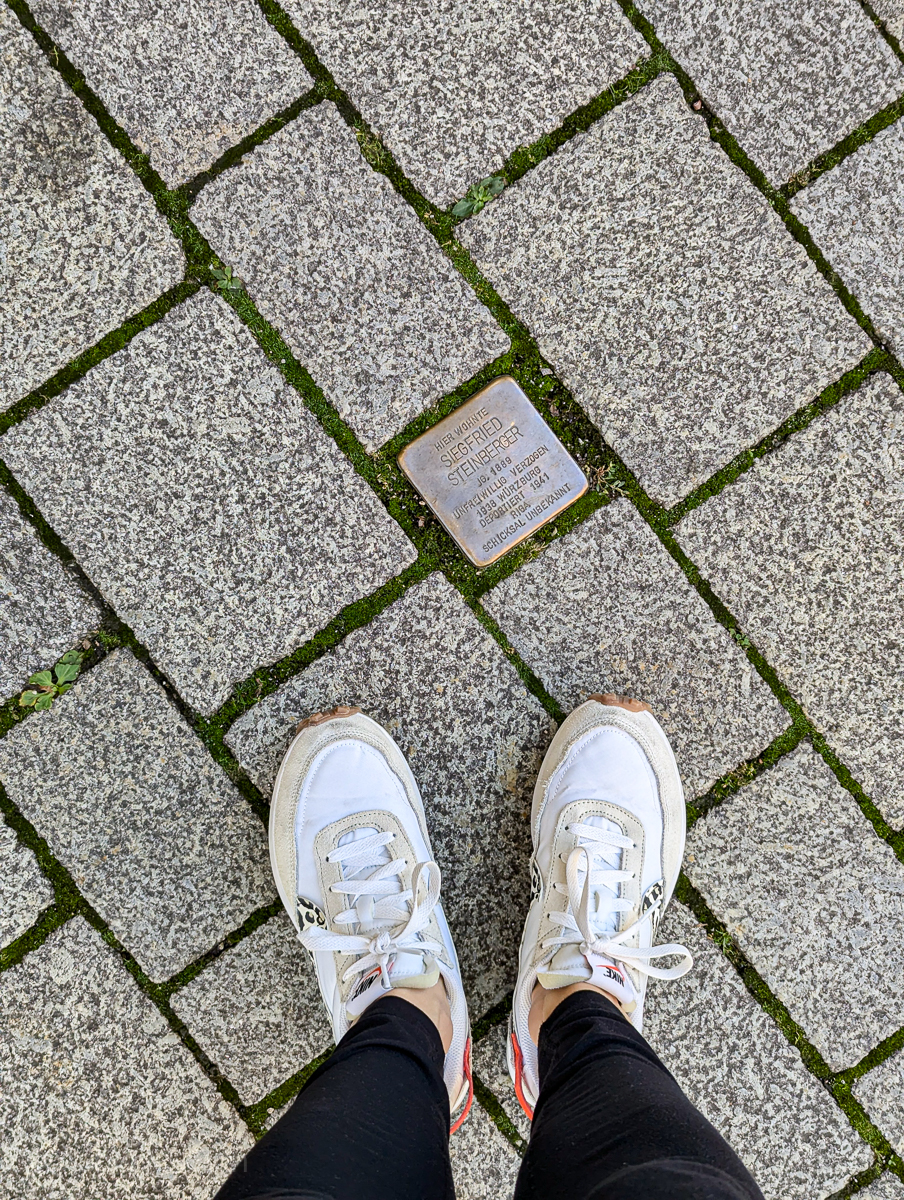
2. Jewish Dancing House Memorial
Back in medieval times, a Jewish community center stood at this location, just next to the Weißer Turm (White Tower). At the base of the tower, at the intersection of Judengasse & Georgengasse, is a small garden. And in that small garden you’ll find a memorial plaque that reads:
In memory of our Jewish citizens who were expelled from Rothenburg between 1933 and 1938
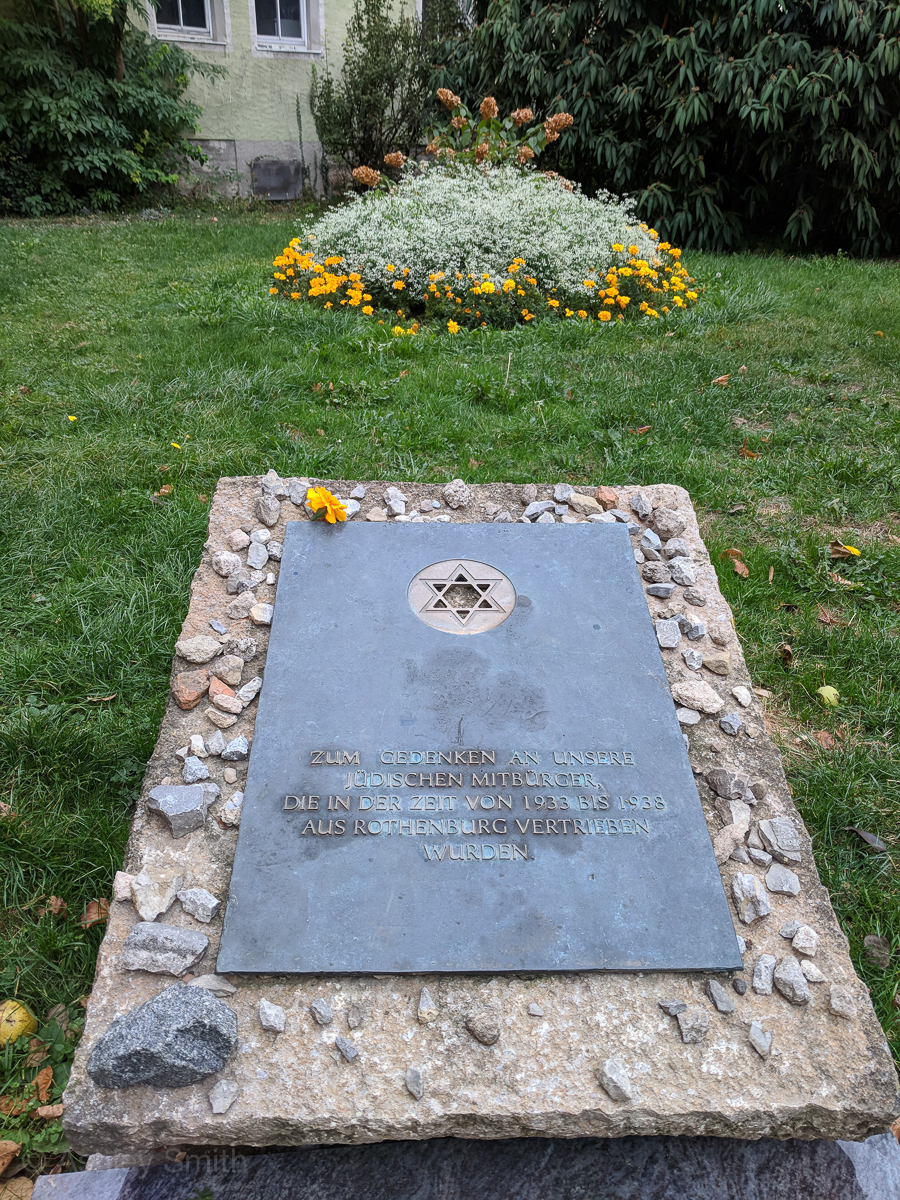
3. Blasius Chapel Memorial
Once part of the castle complex that stood here in the Middle Ages, St. Blasius Chapel now stands alone within Rothenburg’s Burggarten. Inside, the walls contain memorial plaques and murals containing the names of German soldiers killed during World Wars I and II. The text above the names reads:
That our sacrifice may sow seeds for peace with all people and nations
The dead are divided into years (1939-1946) and each block contains the name and year that person was born. Unrelated but still worth noting: On the outside of the chapel, you’ll find the Pogromstein—a memorial stone dedicated to the Jewish victims of the “Rintfleisch Massacre” in 1298 during which 450 Jews were brutally murdered here in the castle. The sculpture at the top of the stone depicts them burning to death.

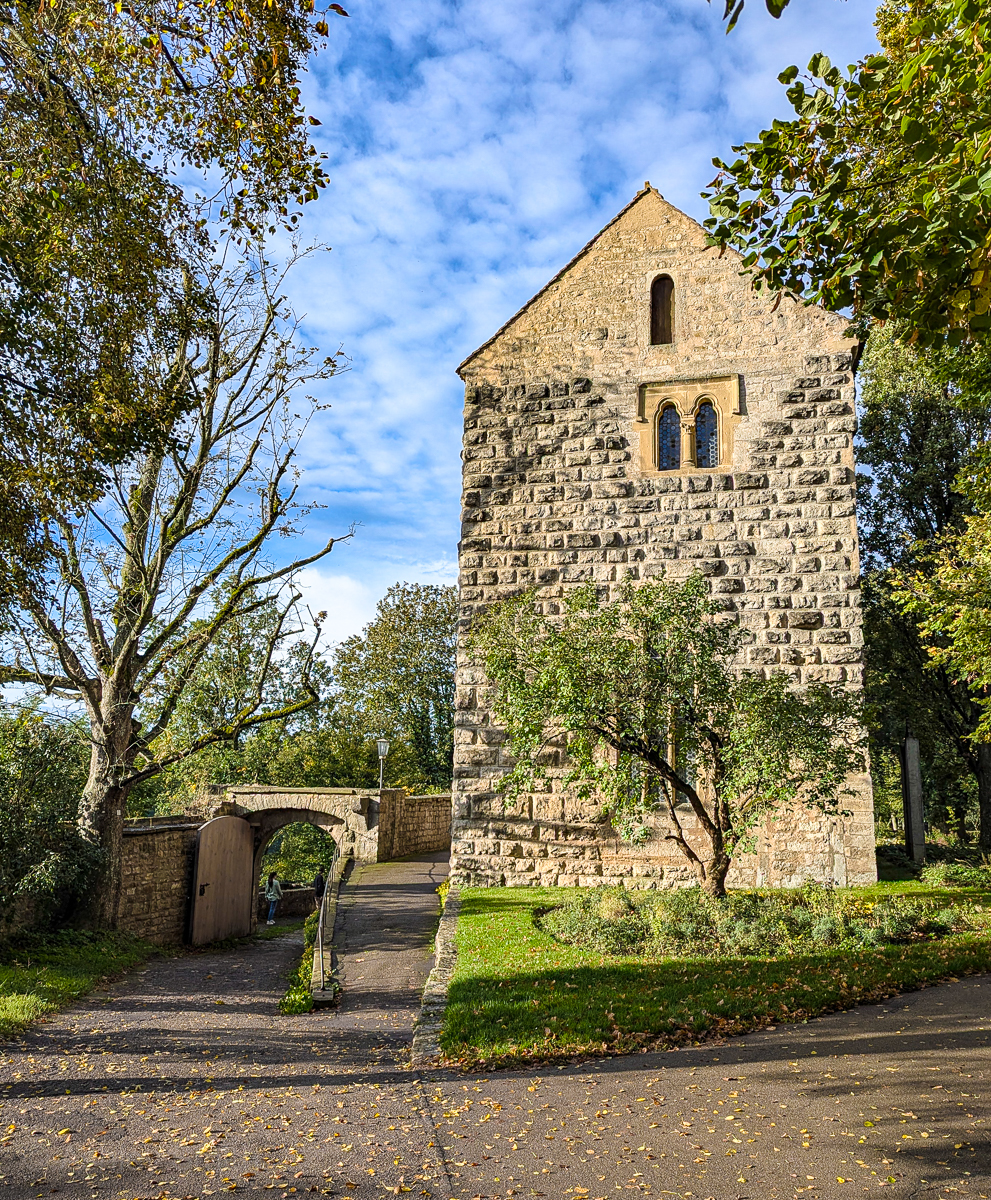
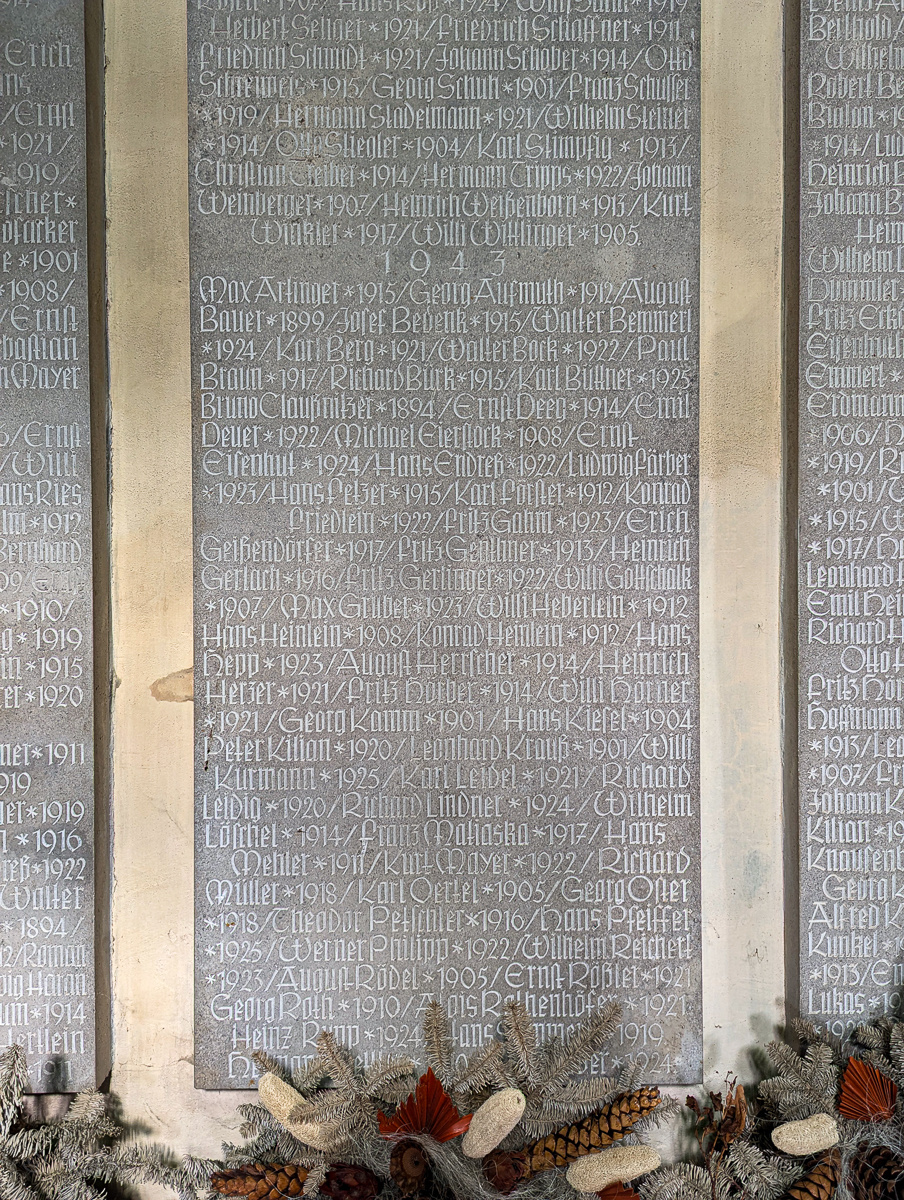
WWII Exhibits in Rothenburg ob der Tauber
Rothenburg doesn’t have any dedicated WWII museums, but there are a few places you can find some interesting exhibits on related topics.
4. Rothenburg Museum
Founded with state subsidies during the “Strength Through Joy” period, the Rothenburg Museum is the largest local history museum in town. There’s a ton of stuff to see here, with collections going back as far as the Stone Age. But if you want to learn about the town’s WWII history, you’ll have to head to the basement.
In the former storeroom of the monastery where the museum is located, you’ll find the Judaica exhibit. This permanent exhibition features an overview of Jewish life in Rothenburg throughout its history. It includes, among other things, exhibits on Jewish persecution during World War II. Some of the information is in both English and German, but most of it is only in German, so have your translator app ready.
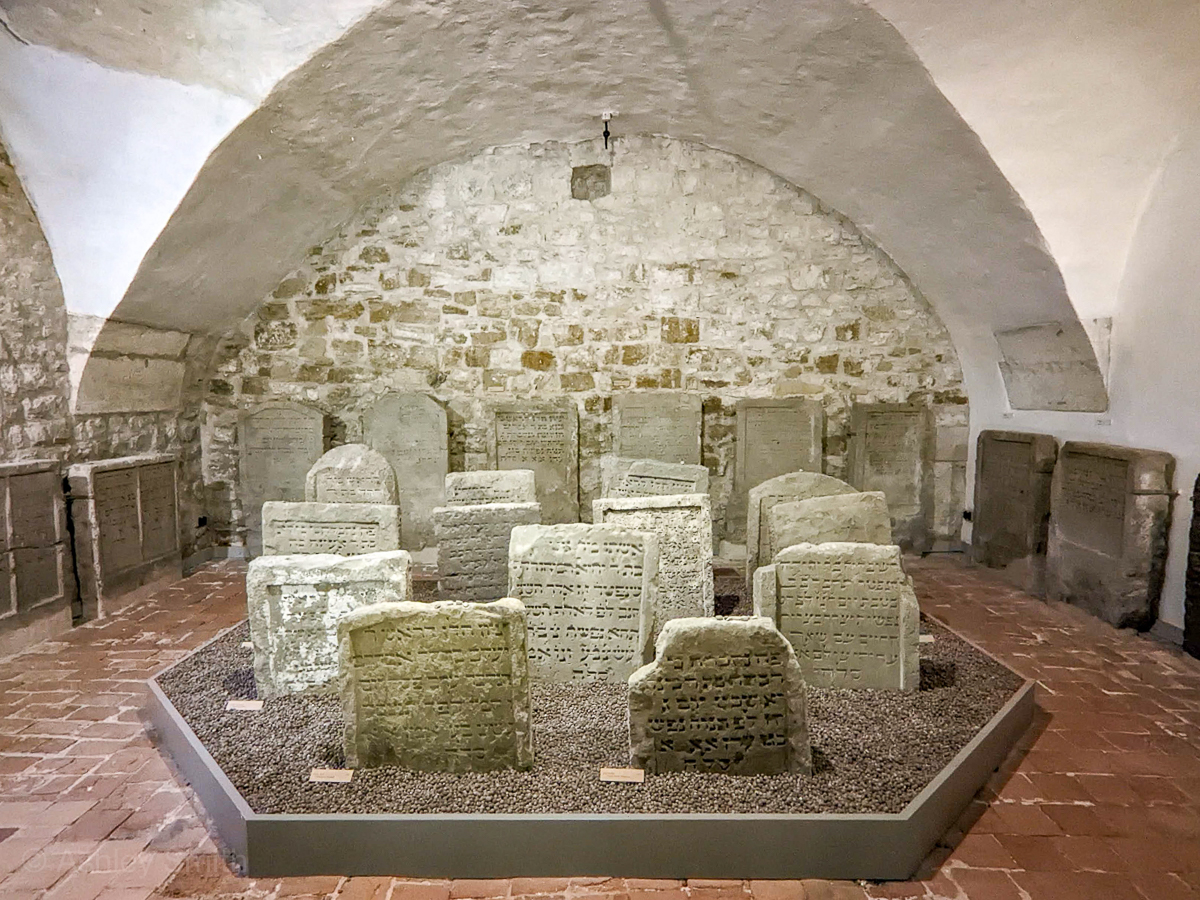
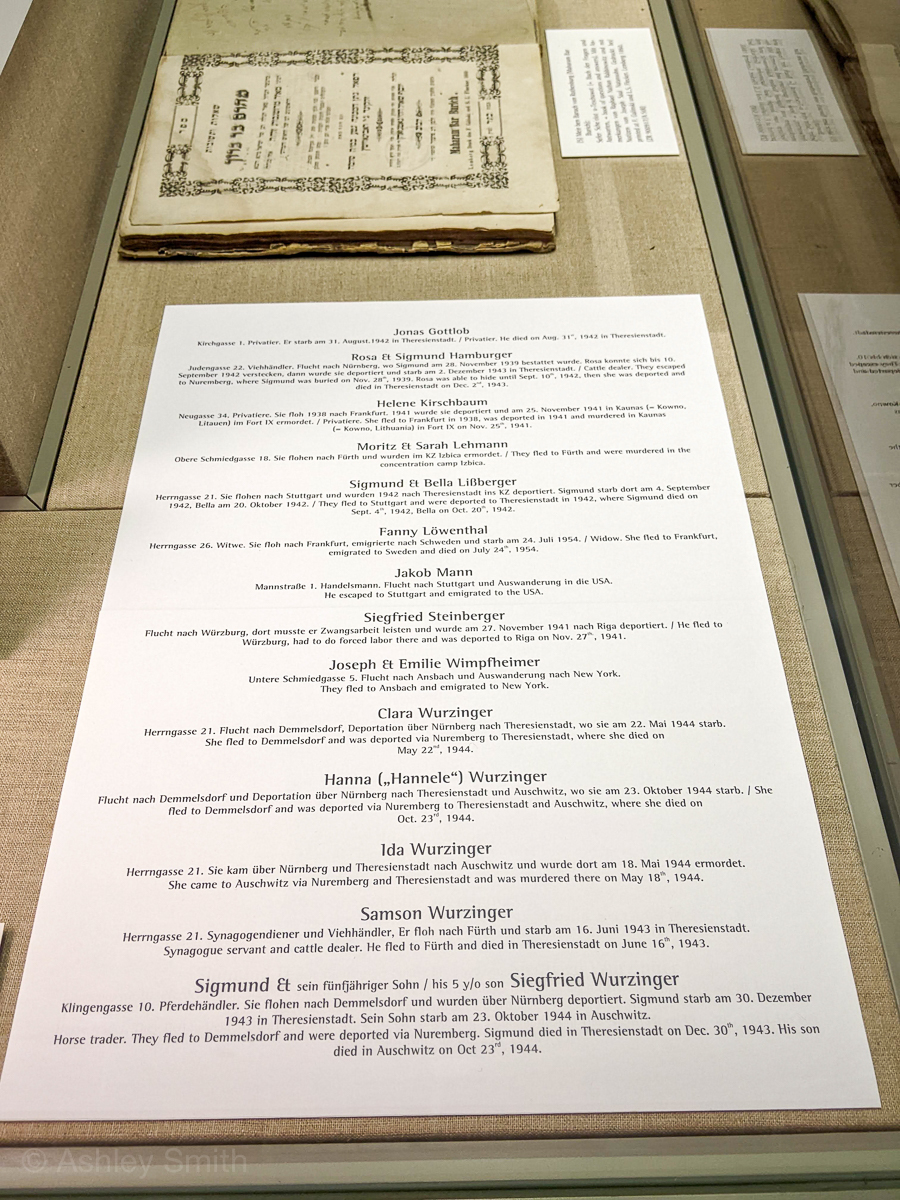
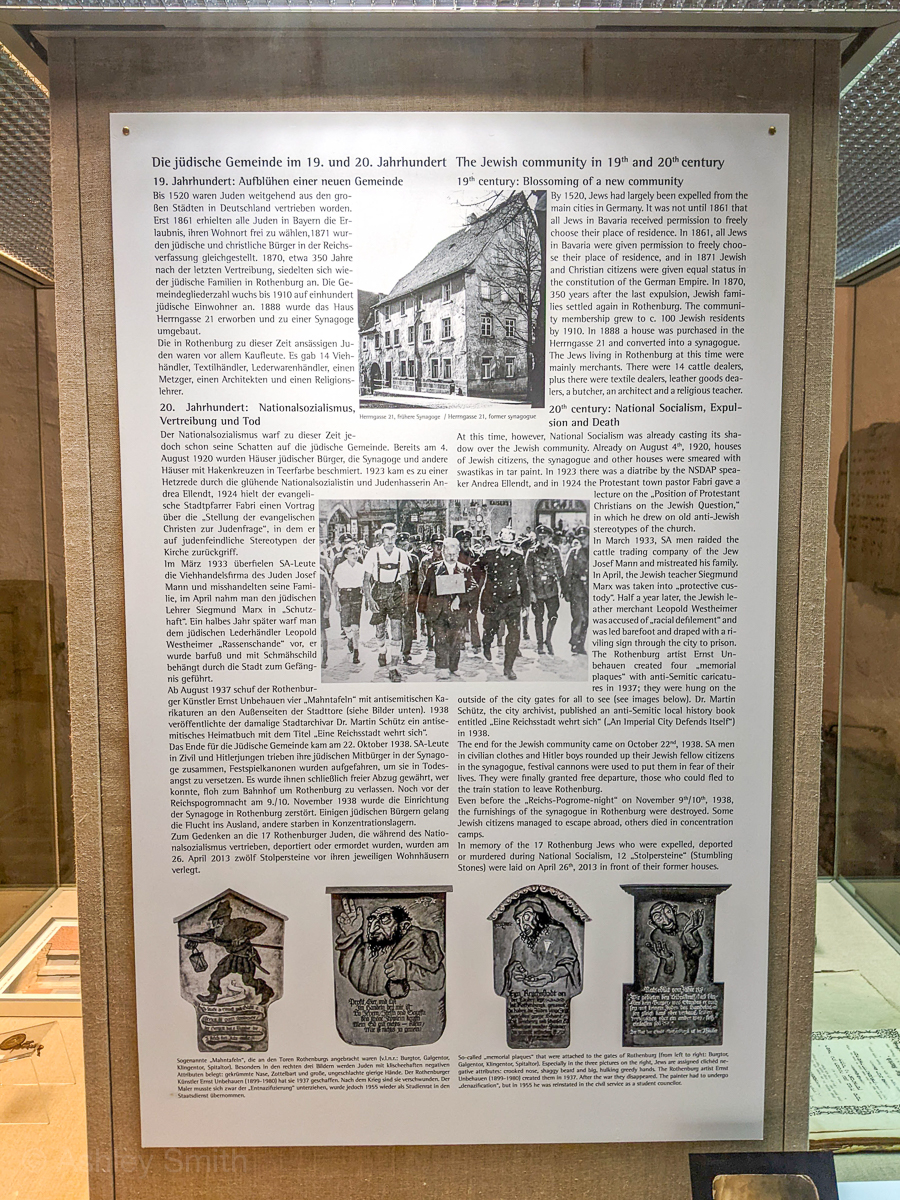
5. St. Wolfgang Church exhibit
Rothenburg’s St. Wolfgang Church is known as the Shepherd’s Church and you’ll find a couple of interesting WWII-related exhibits here. Once inside the church, you can pay a small admission price and then head through the door that’s behind and to the left of the main altar. You’ll wind through some narrow passageways, up and down some medieval steps, and get totally lost in the skeleton of the church.
BUT! Back here are two things worth seeing. One is the Shepherd’s Dance Museum. The Shepherd Dancers were a traditional folk dance group formed in 1911 and especially beloved by the Nazi party. It represented Germany (as Nazi propaganda) in several international and domestic festivals as well as the 1936 Berlin Olympics. Additionally, they regularly performed for the groups visiting Rothenburg as part of the Nazis’ Strength Through Joy program.
The second thing to see is an exhibit showcasing photographs of what Rothenburg looked like at the end of WWII, after the bombings. There are also some framed stories written by those who experienced the bombings, but they’re all in German so be prepared to translate.
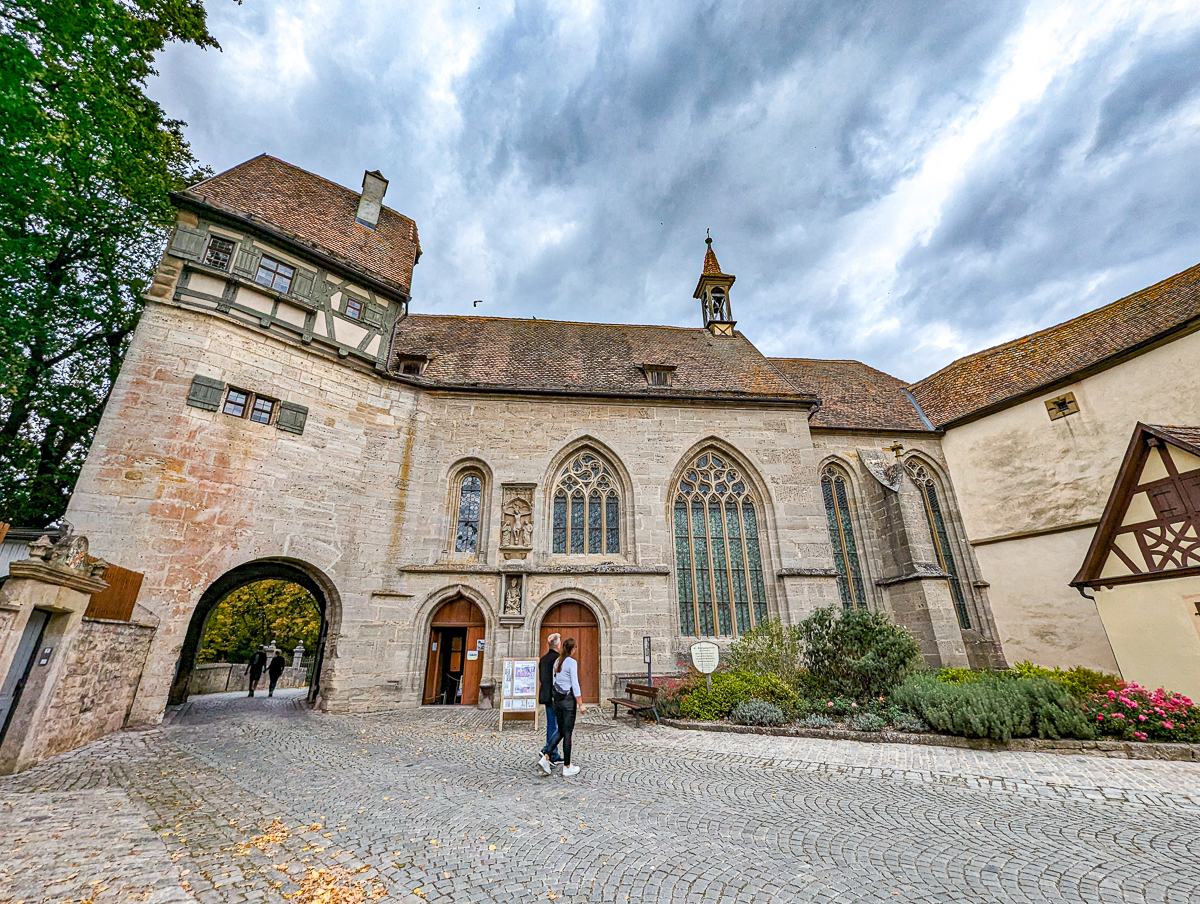
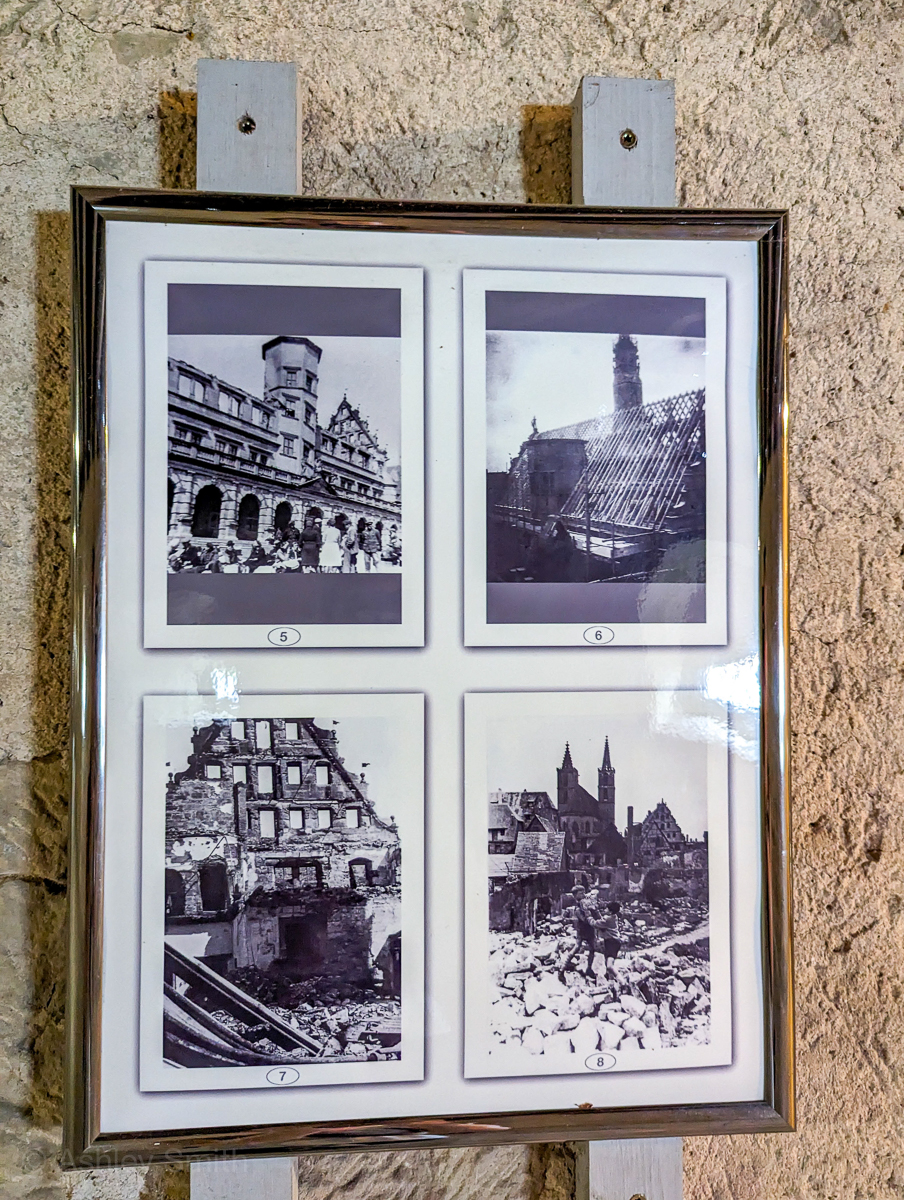
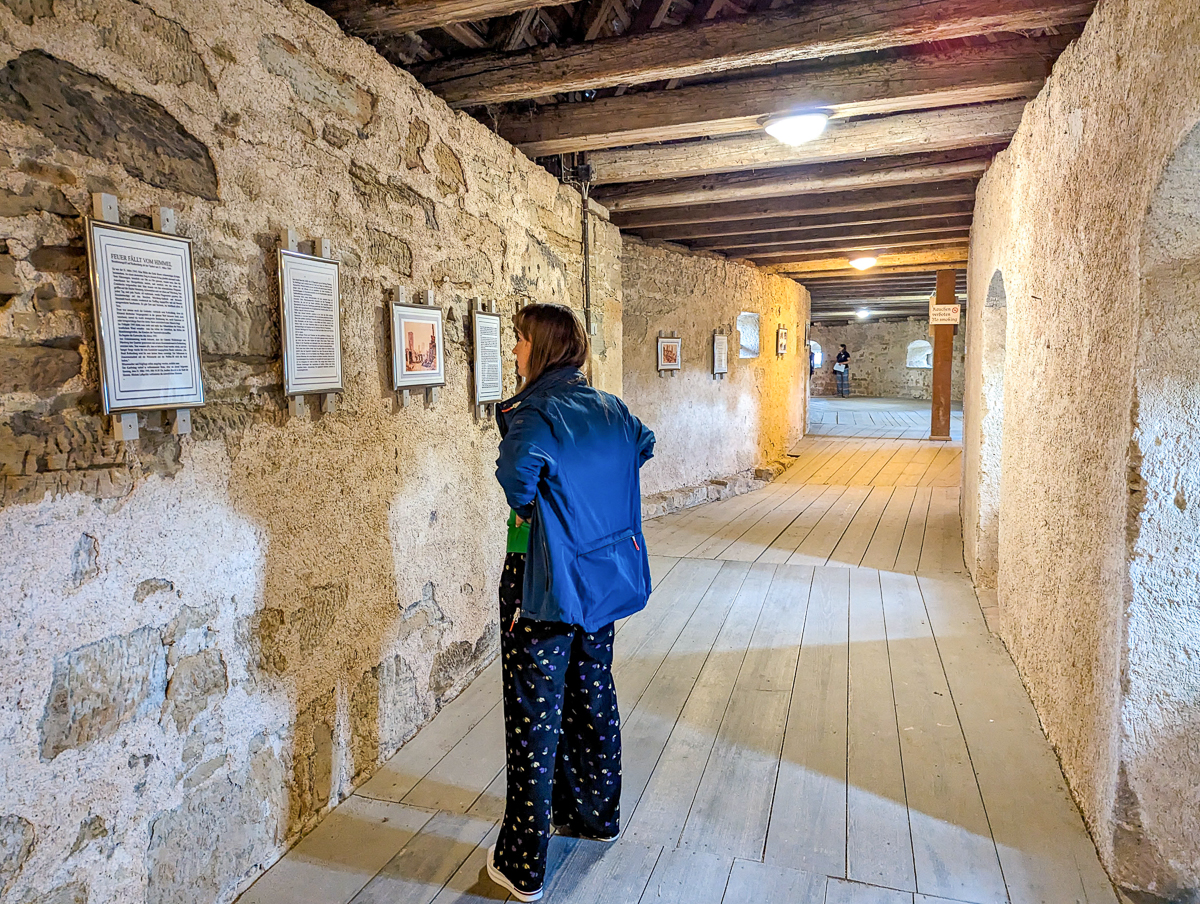
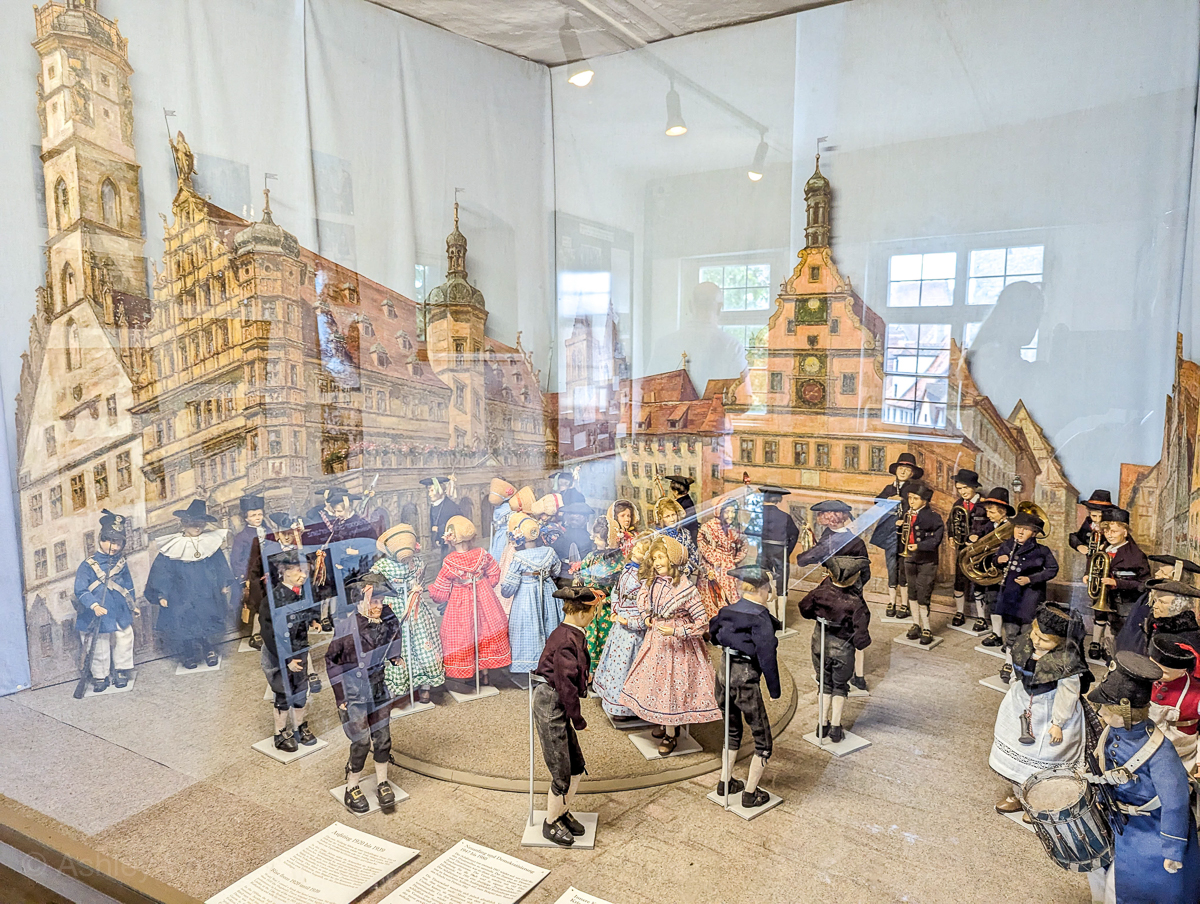
6. Röderturm WWII exhibit
You can find a similar exhibit on Rothenburg’s wartime destruction (and postwar reconstruction) inside the Röderturm. The Röderturm is one of the main towers along the historic defensive walls and the only publicly accessible one. The tower is only open for a few hours each day in the summer, and only on weekends the rest of the year.
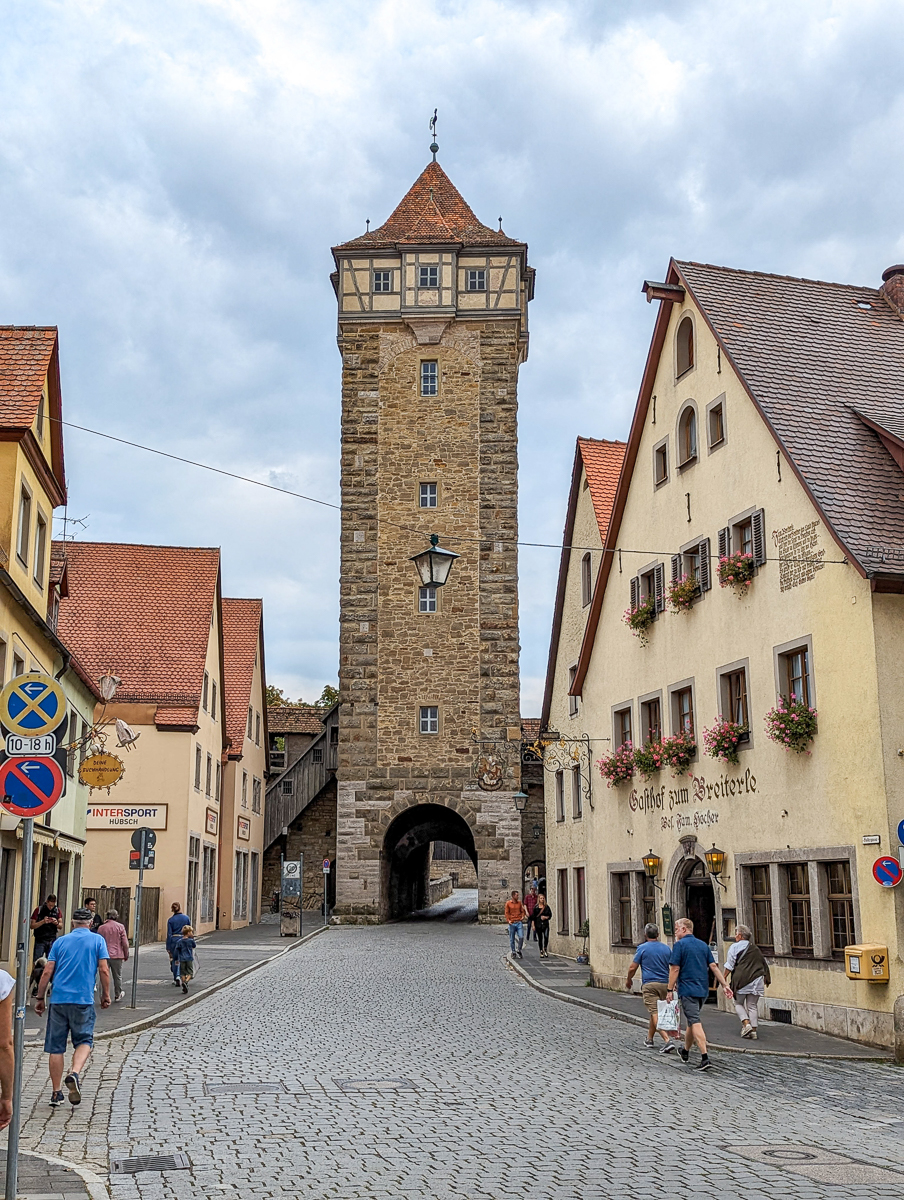
Other WWII sites in Rothenburg
Here are a few more interesting spots to check out related to Rothenburg’s WWII history.
7. Wildbad Hotel
What’s known as the Wildbad Hotel today was actually built in 1902 as a spa resort. (But its history goes all the way back to the 1400s when healing springs appeared in the forest outside Rothenburg after a massive earthquake.) After WWI, the spa fell into disarray and was eventually sold.
During the World War II years, this massive property served several different purposes including military hospital and Hitler Youth school, though I haven’t been able to find much more information beyond that. In the spring of 1945 when the US Army negotiated with the German commander to cease the defense of Rothenburg (sparing its historical treasures), that meeting took place here at the Wildbad which served as the local command post.
After the war, the Bavarian Riot Police used it as a training center and various organizations used it as a conference center after that. It has only reopened to the public as a hotel in January 2025. There’s nothing specific to see here related to its WWII history (which it would appear they’re trying to keep under wraps anyway), but it’s still an interesting property to check out if you’re out walking this way.
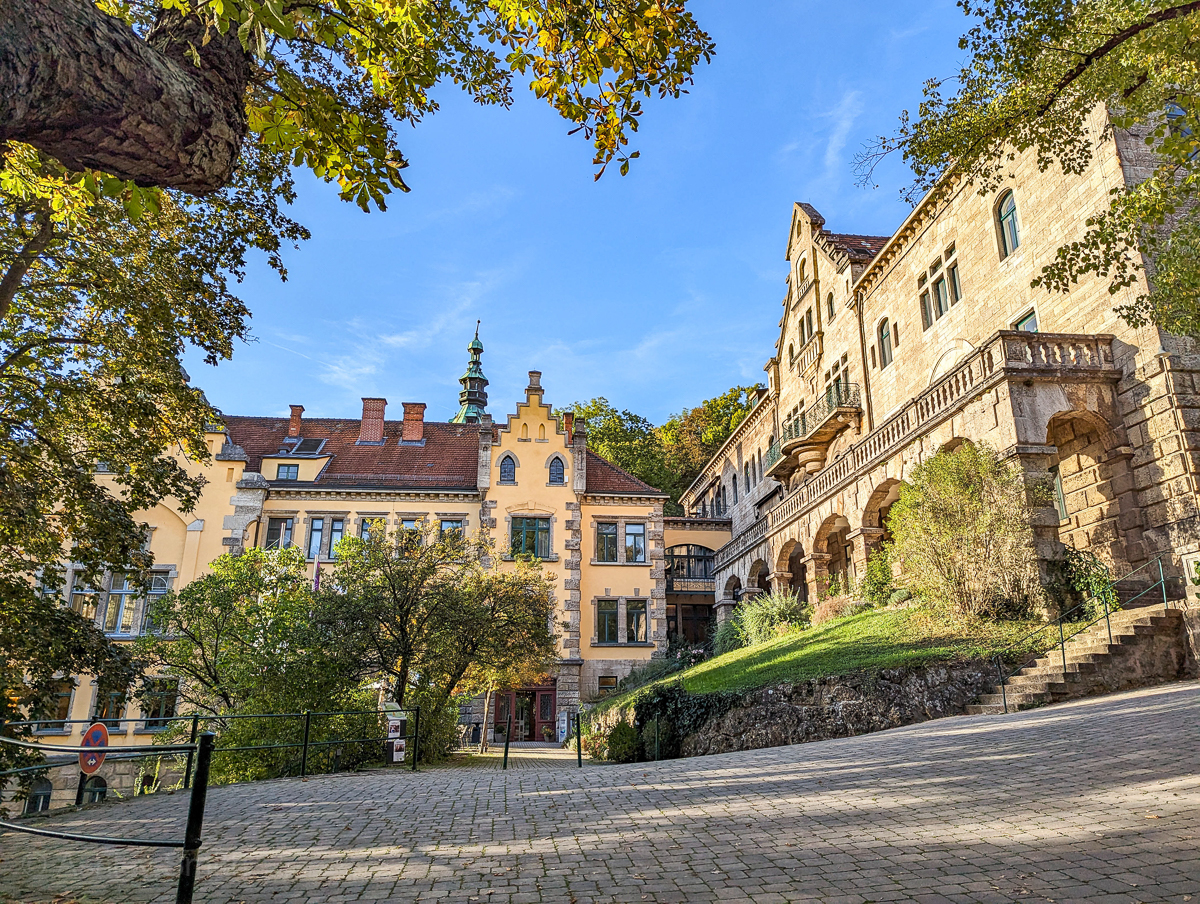
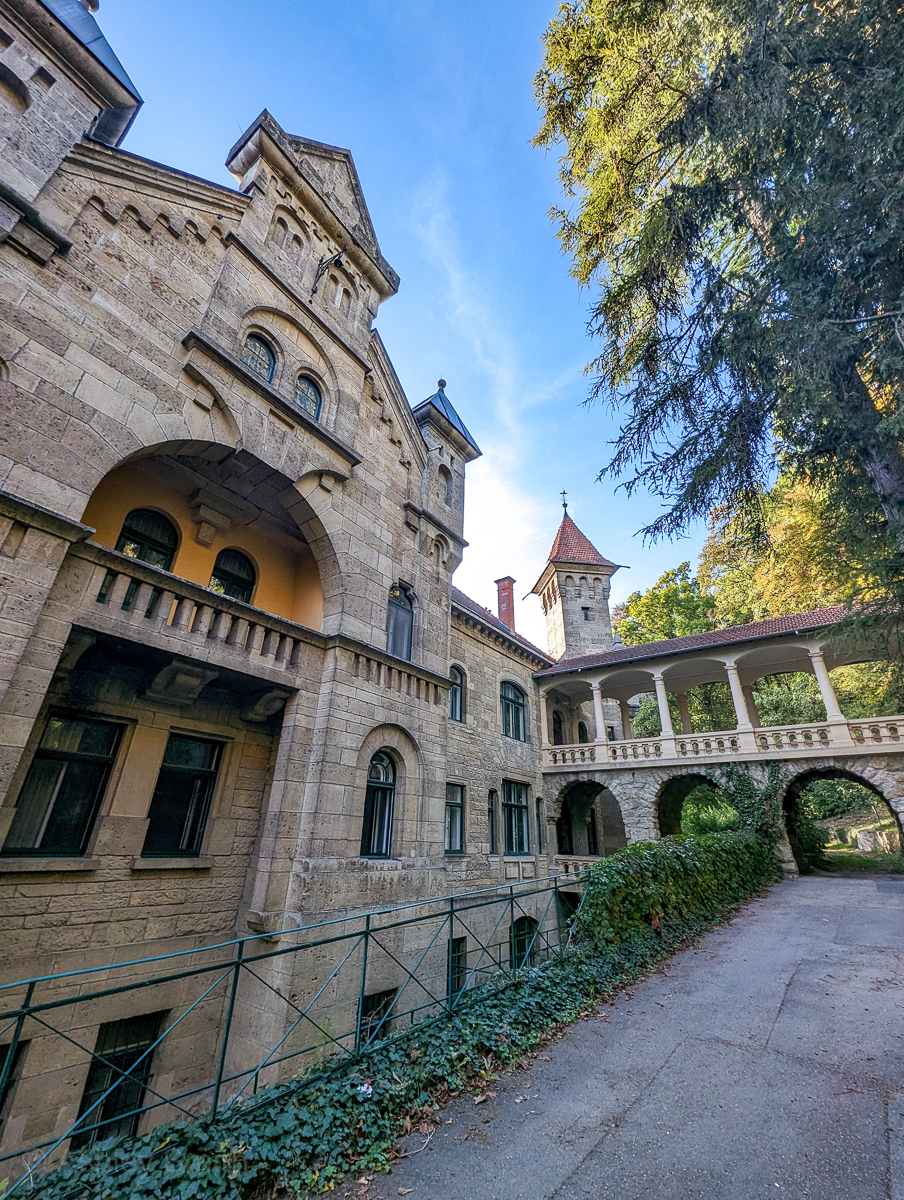
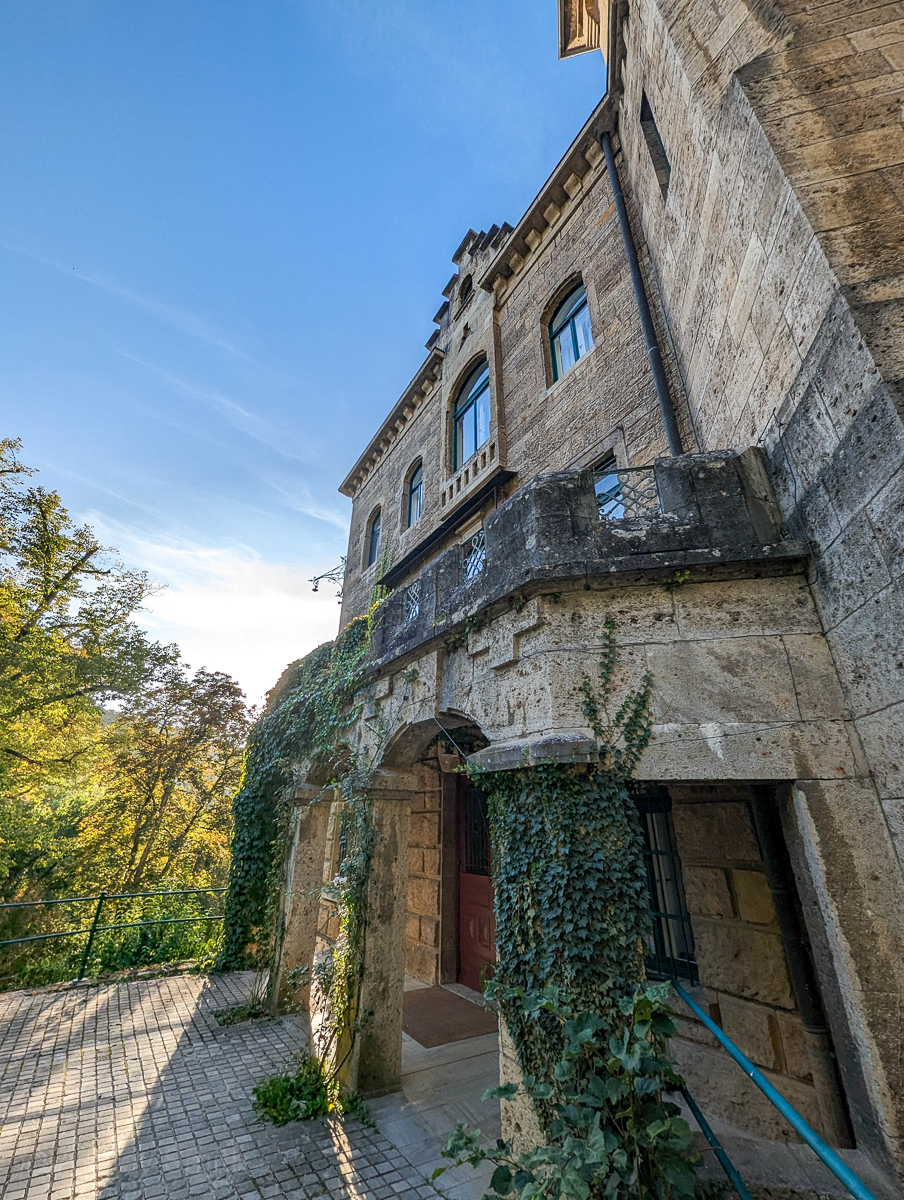
8. Reichsadler
Above the main entrance to the building located at Ober Bahnhofstraße 31, you can still see a reichsadler (Nazi Eagle) hanging over the door. The swastika has been removed, but the eagle is still there.
During the war, this building served as the local tax office. Also during the war, this street was called Ludwig-Siebert-Straße after the former Mayor of Rothenburg and prominent Nazi politician Ludwig Siebert. After the war, the street’s name was changed, as was common with Nazi-named streets, buildings, parks, etc.
When the US military vacated Rothenburg in 1955, the still-very-Nazi town of Rothenburg decided it was their “moral duty” to change it back. So, from 1955 onward the street was once again known as Ludwig-Siebert-Straße. It wasn’t until 2015 when a hard-fought campaign to remove his name finally succeeded. Since then, it has been called Ober Bahnhofstraße (Upper Railway Street). I guess removing the Reichsadler was just too much to ask?
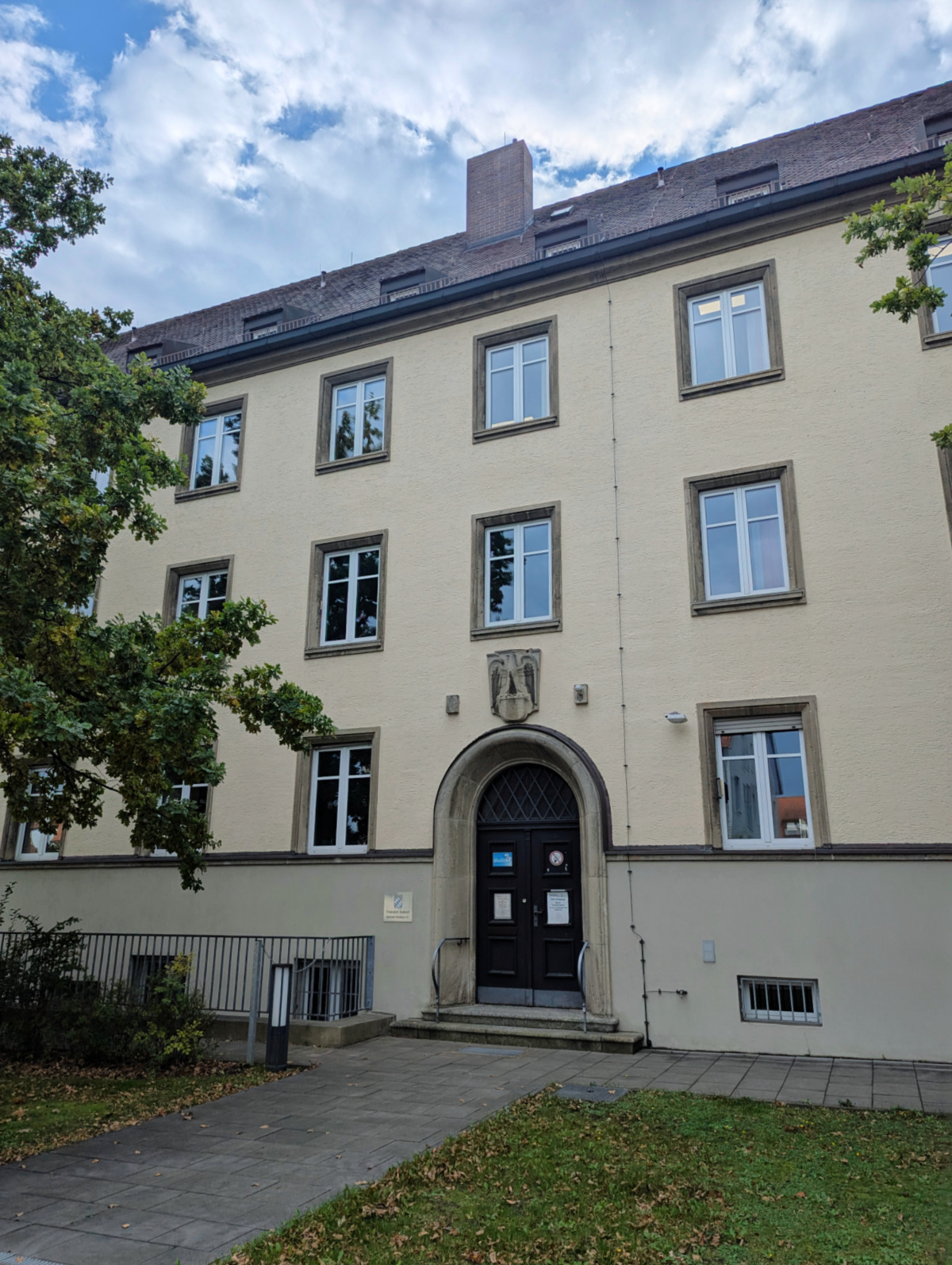
9. Rothenburg Jewish Trail
All around Rothenburg you can find little plaques with a bit of information and a QR code. Scanning that code will take you here, to the “Following Jewish Footsteps in Medieval Rothenburg” page.
You can follow this “Jewish Trail” all around Rothenburg and stop at several different historical sites related to the city’s Jewish history. Some are related to WWII (and included in this post), and some aren’t, but all are interesting. This historical trail and accompanying app was created by a local school group.
Pro tip: Every Saturday at 2:30pm, a guided tour of Rothenburg’s Jewish history leaves from the Rothenburg Museum.

Additional Rothenburg WWII Resources
Though not many exist, there are some really great resources if you’d like to learn more about Rothenburg ob der Tauber during World War II. Check these out:
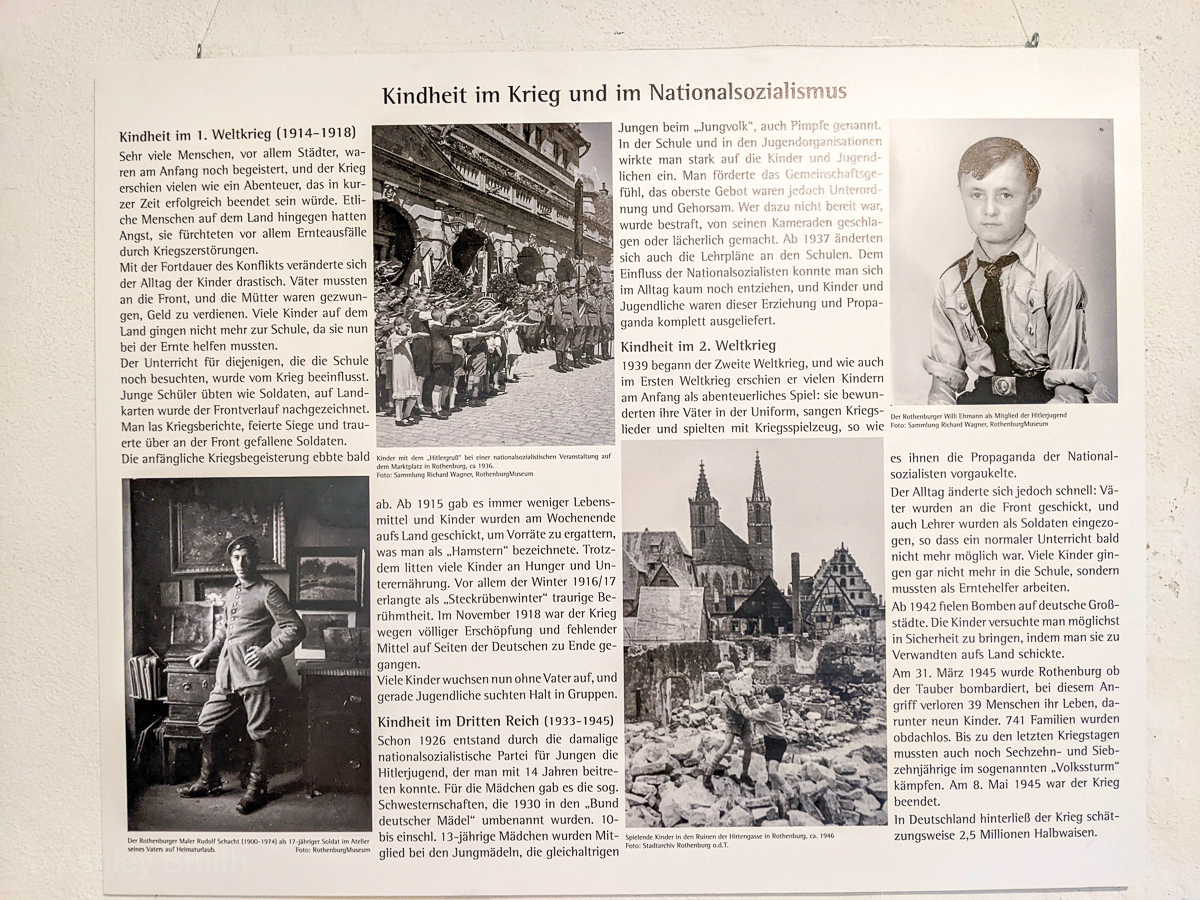
Where to stay in Rothenburg ob der Tauber
There are tons of quaint and historical properties at which to stay during your visit to Rothenburg ob der Tauber. Here are a few recommendations to start your search.
See all available Rothenburg hotels here.
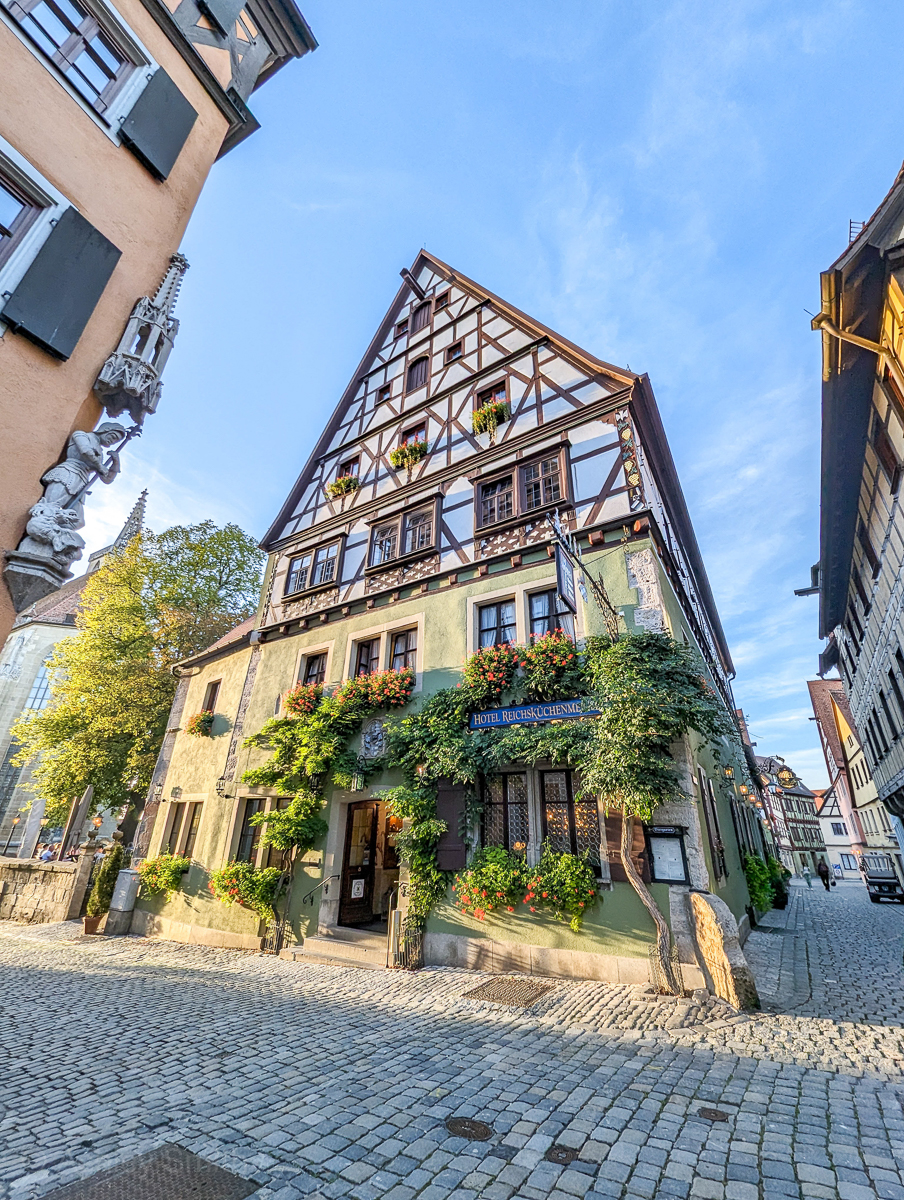
What else to do in Rothenburg ob der Tauber
Rothenburg ob der Tauber is small but offers a lot of interesting things to do (besides visit WWII sites). I won’t go into them all here, but check out my post on all the best things to do in Rothenburg with all the details. Visiting the Plönlein and walking the defensive walls are just the start of it!
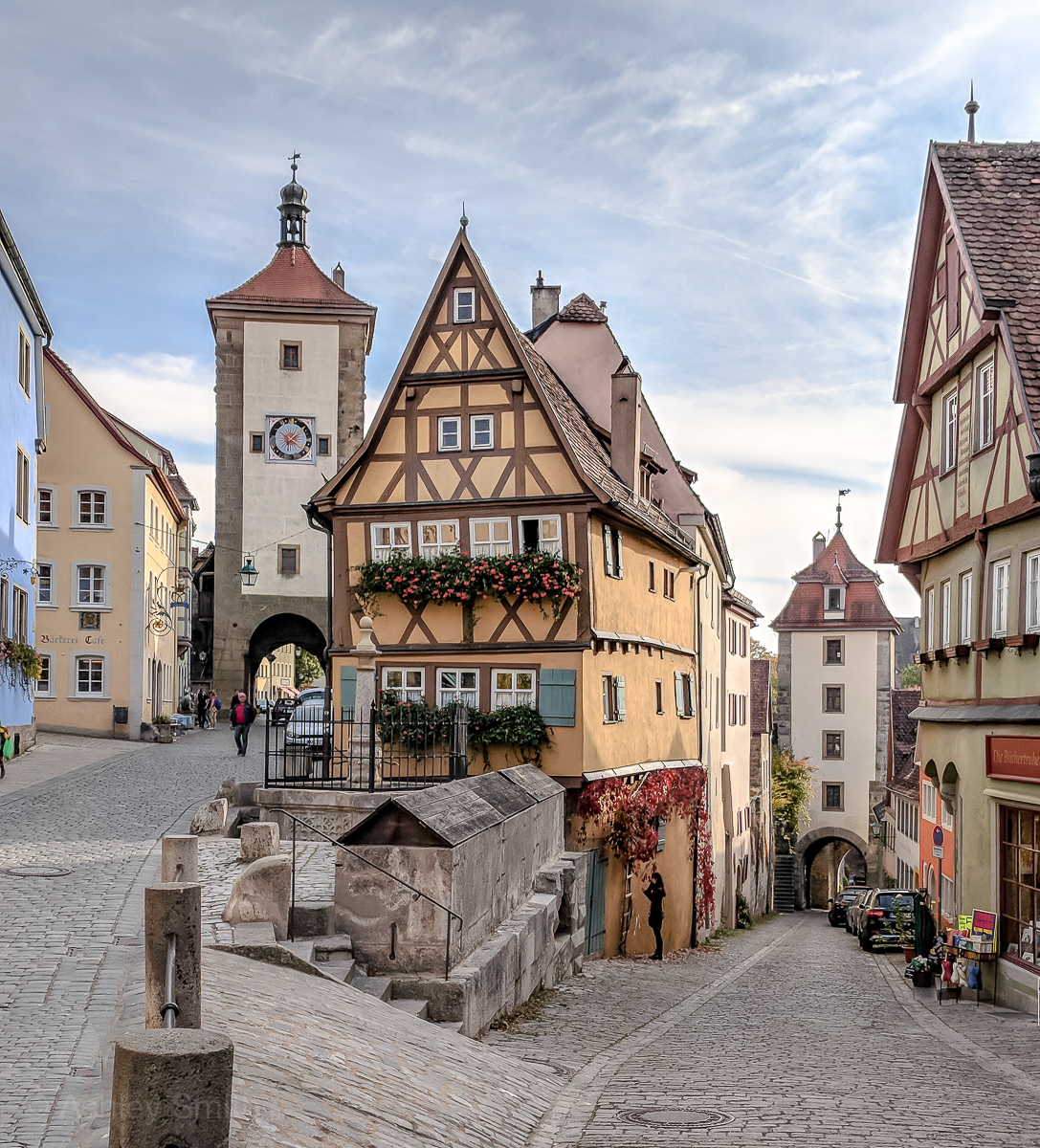
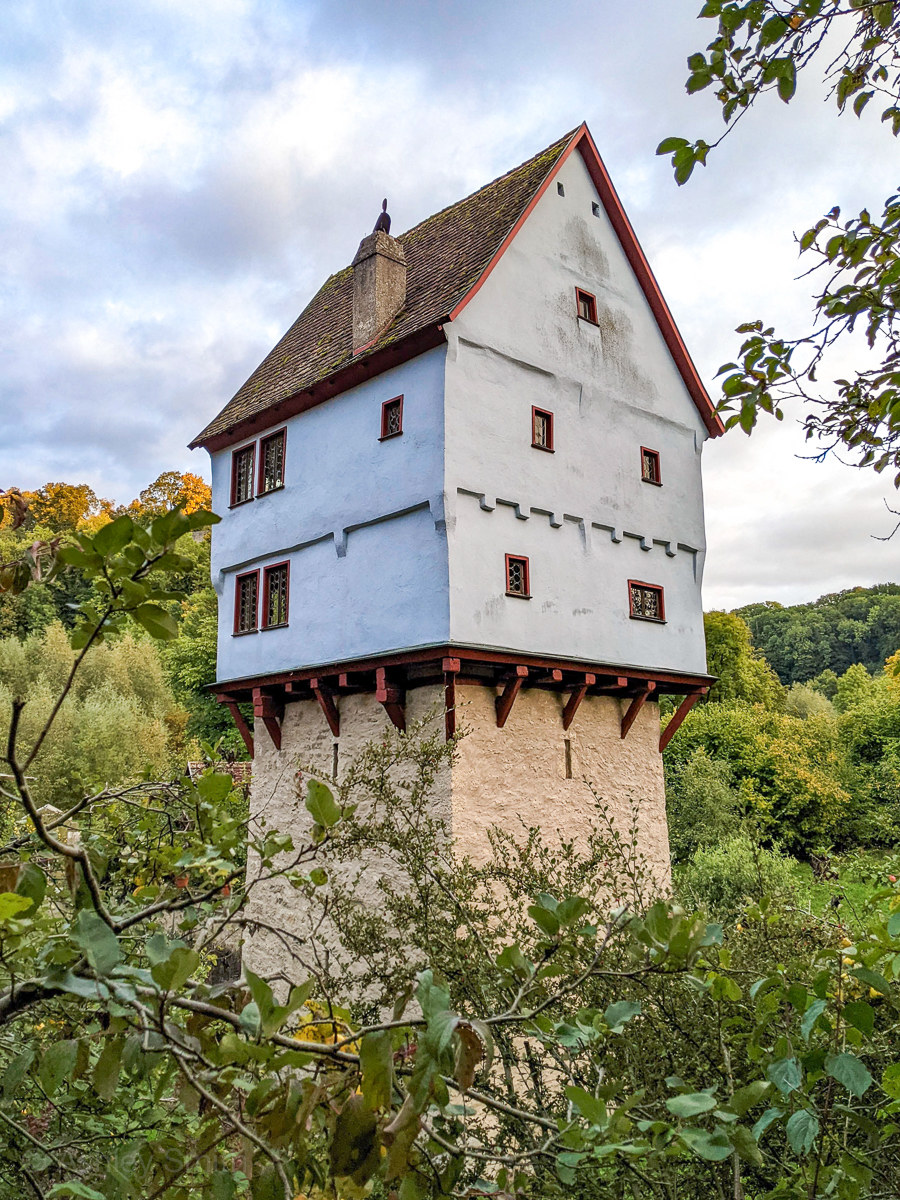
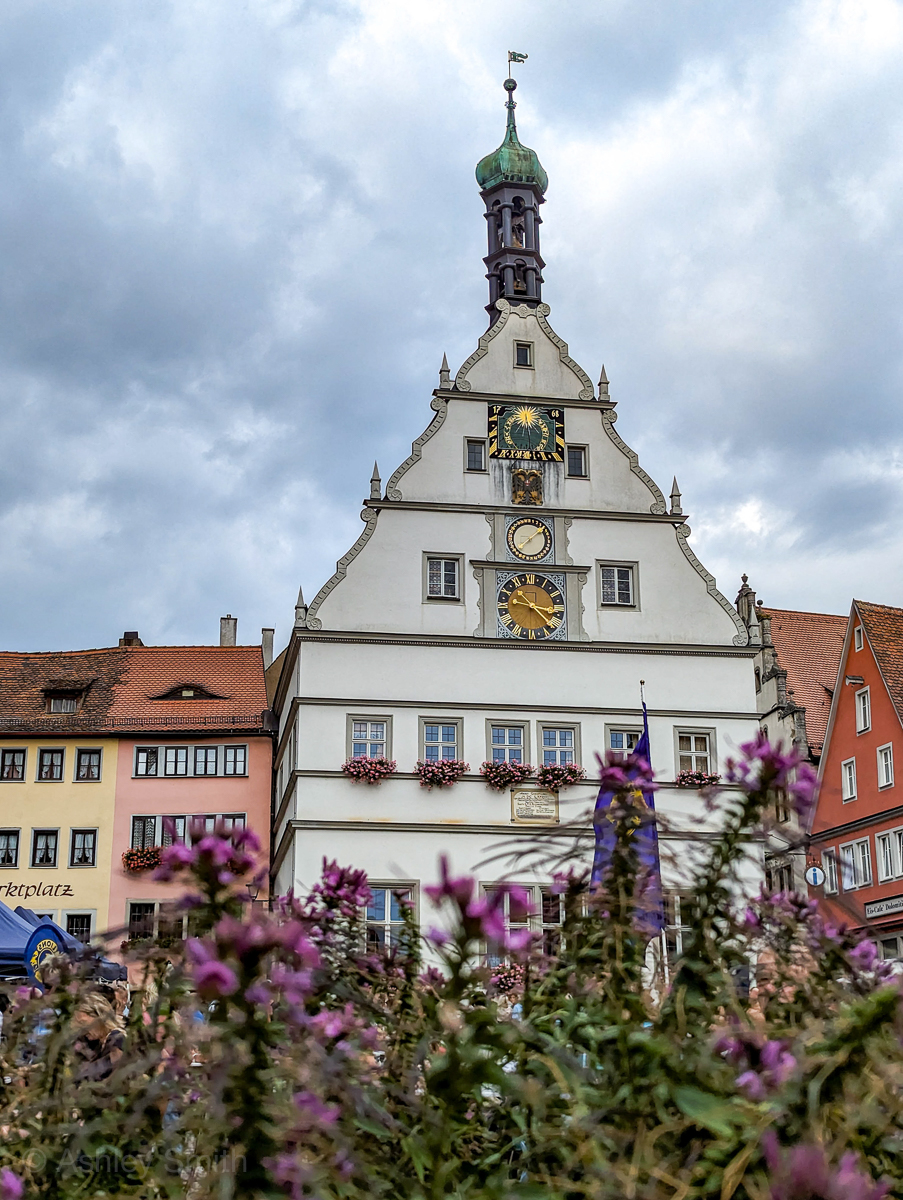
More info for your trip to Germany
- Hotels: Find great places to stay on Booking.com (my go-to). Expedia and Hotels.com are worth checking too. VRBO is best for apartment rentals.
- Rental cars: Check out the best rental car deals here.
- Local tours & activities: Check out all the great options from Viator and Get Your Guide here.
- Don’t forget a Germany guidebook and this must-have Germany customs and culture guide.
- Want more? See all my Germany posts here.
Like this post? Have questions about visiting any of the WWII sites in Rothenburg? Let me know in the comments below. Thanks for reading.

Save this info, pin these images:
